

























































































































































babysandbeyond celebrating renewal
The heat is here in more ways than one!
Spring is possibly best known for its blooming flowers, but in essence it is symbolic of renewal. If one spends some time looking back, it is quite fascinating to take note of our personal transformation.
Reading through our cover story featuring Graeme Richards (page 8) brings home the idea of change. I still recall watching Graeme on SABC as a continuity presenter – we witnessed how he grew and diversified his career, and now he is a family man.
Irrespective of how uncomfortable change may be, we are continuously evolving. Our dreams and goals change –sometimes because we are ready to adapt, and sometimes as a result of external influences. Sometimes we choose change, but are still shocked at how much of an impact it has – for example it is generally known that deciding to have a baby brings about a change in lifestyle, but the reality is so much more.
I firmly believe that we as individuals are more resilient than we give ourselves credit for. I think what we sometimes forget is to be kind to ourselves – making mistakes and having things not go your way is part of life, but we can either choose to become angry, or we can look at challenges as learning curves and change our actions accordingly.
As we celebrate the renewal that spring brings, this is a great time to take stock, plan ahead, and make positive changes to achieve whatever new goals you might have.
Happy spring!






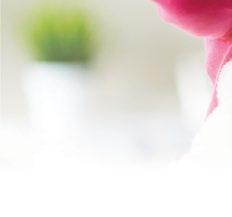


and needs to be admitted to hospital, our team at Life Kingsbury Hospital is here for you.
and needs to be admitted to hospital, our team at Life Kingsbury Hospital is here for you.















The Life Kidz paediatric unit at Life Kingsbury Hospital has been designed with you and your child in mind. Our clinical team of specialists and nurses will care for and nurture your child in a unit specially designed to make them forget that they are even in hospital – beds and blankets aside!
The Life Kidz paediatric unit at Life Kingsbury Hospital has been designed with you and your child in mind. Our clinical team of specialists and nurses will care for and nurture your child in a unit specially designed to make them forget that they are even in hospital – beds and blankets aside!
Paediatricians:
Paediatricians:
Dr Rabeen Lutchman
Dr Rabeen Lutchman
Dr Hazel Msimango
Dr Hazel Msimango
Dr Allan Puterman
Dr Allan Puterman
Dr Lara Smith
Dr Lara Smith
Dr Hedi van der Watt
Dr Hedi van der Watt
Paediatric Surgeon:
Dr Shamaman Harilal
Paediatric Surgeon: Dr Shamaman Harilal
ENT Specialist:
Dr Ola Basson
ENT Specialist: Dr Ola Basson
Dr Gary Kroukamp
Dr Gary Kroukamp

For hospital information and specialist contact details.
For hospital information and specialist contact details.
Wilderness Road, Claremont, 7700 | Tel: 021 670 4000 24-hour emergency unit: 021 670 4039
Wilderness Road, Claremont, 7700 | Tel: 021 670 4000 24-hour emergency unit: 021 670 4039
www.lifehealthcare.co.za
www.lifehealthcare.co.za

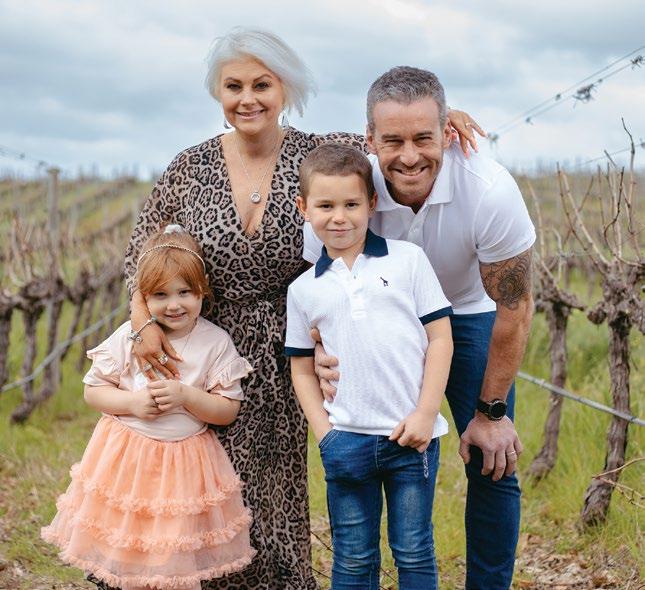



Unpacking the links between eczema & allergies
most common asthma questions
Learning about nosebleeds
Get a boost!
Causes of constipation
Burning issue: urinary tract infections (UTIs)
Understanding the liver's silent threat
Home treatment for wounds
Side effects of medication
Boost your libido
Is stress killing your appetite?
.
Subscriptions aren’t just for streaming services. Rentoza, South Africa’s leading product subscription business, lets you subscribe to products as long as you need them and return them when you’re done.
Though Rentoza is best known for their tech subscriptions, they also offer a range of baby products like strollers, car seats, and high chairs. This innovative approach is convenient, affordable, and a whole lot less stressful for new parents. Here’s why.
As a new parent, budgeting is your new best friend. Buying baby products is incredibly expensive. With Rentoza, however, you don’t pay heavy upfront costs. With their subscription model, you pay manageable, month-to-month payments that help you stay within your monthly budget while still getting everything your baby needs.
As your baby grows, so do their needs. Instead of buying new items, Rentoza lets you easily upgrade to the next size or switch products. Change or cancel your subscription anytime without penalties so you can adapt to your baby’s evolving needs.
Subscribing is a cost-effective way to provide for your baby without overspending. It simplifies the process and allows for easy upgrades as your baby grows.
Join the Baby Sub Club today at rentoza.co.za .





PUBLISHER: Elroy van Heerden Mays elroy@mediaxpose.co.za
EDITOR: Tashne Singh editor@babysandbeyond.co.za
SUB-EDITOR: Jacky Dyer sub@mediaxpose.co.za
CONTENT MANAGER: Wadoeda Adams artwork@mediaxpose.co.za
CONTENT ASSISTANT: Ketsia Makola ketsia@mediaxpose.co.za
EDITORIAL CONTRIBUTORS
Dr Chanell Marthinussen
Dr Ola Basson
Elroy van Heerden-Mays
Dr Mandy-Lyn Meyer
Petra Scherf
Dr Savanah Smith
Bradley Mphaho
Dr Clayton Mentoor
Dr MT Ismail
Medipost Pharmacy
Affinity Health
Emma King George Mwaura NSPCA
Life is a Garden
Shannon Smith
DESIGN & LAYOUT
Shaun van Heerden Mays Anja Bramley
PROJECT MANAGER: Allison Davids allison@babysandbeyond.co.za
ADVERTISING SALES: Lorraine Beneke lorraine@babysandbeyond.co.za Siya Ngoni siya@mediaxpose.co.za
DIGITAL MARKETING MANAGER Juhi Rampersad juhi@mediaxpose.co.za
DIGITAL AND SOCIAL MEDIA
Kyla van Heerden Tia Arendse
DISTRIBUTION & SUBSCRIPTIONS: Shihaam Gyer distribution@mediaxpose.co.za
MEDIA PARTNERSHIPS: Maurisha Niewenhuys maurisha@mediaxpose.co.za
CHIEF FINANCIAL OFFICER: Shaun van Heerden Mays
HR MANAGER: Divan Lategan
WEBSITE ADMINISTRATOR: Justin McGregor
RECEPTIONIST: Kayley Townsend
RETAIL DISTRIBUTION: On The Dot
AIRPORT DISTRIBUTION: Media Support
PICTURE CREDIT: 123rf.com
Van Heerden Mays Publications CC t/a Media Xpose
Company Reg



Disclaimer: The views expressed in this publication are not necessarily those of the publisher or its agents. While every effort has been made to ensure the accuracy of the information published, the publisher does not accept responsibility for any error or omission contained herein. Consequently, no person connected with the publication of this journal will be liable for any loss or damage sustained by any reader as a result of action following statements or opinions expressed herein. The publisher will give consideration to all material submitted, but does not take responsibility for damage or its safe return.
Terry and Amy went fishing in the river near his house. Terry’s takkies got wet and he wanted to let them dry off before the walk home. A few days later, he had a sore tummy and itchy feet.

Richards
TV personality Graeme Richards has been a constant fixture in many of our lives. He is probably best known for his upbeat persona. Married to professional ballroom and Latin dancer Lindsey Muckle and a dad of two, Graeme is on his most adventurous journey yet – a family man! He shares with Baby’s & Beyond his journey of being authentically himself, embracing emotions, leaning into the crazy and the importance of being grateful.


You have been a constant fixture on the telly. Is spending such a long time in the public eye daunting?
It has its moments, but the privilege of having the platform is far more incredible than any pitfalls. The funny part is that I have been on air and lived out far more of my real-life moments on TV than off it. It has given me access to a life-changing, paradigm-shifting, and enlightening path, and I am so blessed to “live” with so many others.
Who is the most inspirational person you have met and why?
Many have made their mark in the tens of thousands of interviews I’ve done. I’ve forgotten more of the “high profiles” than I can remember, but the one interview I am taken back to daily was with a young man few will ever know of.
Sorry to go to a dark place, but he, barely an adult himself and, by his own and our standards, a societal dropout, was shunned and found his “last chance” as a volunteer at a rape crisis centre, responsible for getting critical evidence from children who were too young to speak for themselves at the time of their unimaginable trauma. This could only be achieved by repeatedly putting himself in the most traumatic space I have ever encountered and could only bear for a few moments (and then needed weeks off air to recover mentally and emotionally). He was the critical factor in the successful prosecution of over 50 sexual offenders and murderers who would, without a shadow of a doubt, have repeated their crimes on children.
Who knows how many since then and how many children he has potentially saved from this fate… hundreds! He had no idea how amazing he and his contribution were. Fame does not matter; your social impact is the thing.

What is your secret to remaining upbeat?
Practice. Believe it or not, while I am very optimistic, a barrage of hectic negative factors over the last few years – which impacted many of us – has meant I have had to learn how to reset myself. It has become as fundamental to my pre-work routine as showering and dressing.
Gratitude is the practical key that shortcircuits the negative neural network. While on the highway on-ramp, it starts with a list of what I am grateful for. It manifests by my final off-ramp 4km away, with an uninhibited smile and adrenaline firing up my system. It can be small, nuanced, or grateful for being alive and in the fight on the darkest days. Still, the bottom line in positivity is fitness.
What is the best part of being you?
Having been in the public eye for such a long time, what would surprise people about you?
For someone gifted such a remarkable and long tenure in the role and now primed to enter my prime, I break most of the rules taught to those entering the industry. I cannot see where my career begins and ends; I am professionally myself.
It’s a wild ride that has always felt like a fullon Hollywood movie, with the craziness of my on-air life matched or even surpassed by the even more unbelievable moments in my journey that come from being as open-minded, prepared and flexible as I am – perfect for someone like me who has a 3-second attention span. I’m sure a little less so for the fantastic family and friends who contend with me.
Bigger picture, while I have to wake up every day grappling with the problems of about a million people who I dearly love, which in the context of SA is pretty taxing for an empath like me, I have been the custodian of life-changing moments for so many others, even the activator; I can track my impact through thousands of positive threads, what a privilege.
My family, in particular my children. I never knew my father, so becoming one has always been a gift I can’t fully wrap my head around. I saw my mother overcome insurmountable challenges, which has become my mindset and inability to accept defeat and always look for a way forward. In recent years, my kids have given me the strength or sheer force of will to power that emotion and overcome seemingly impossible odds.

You are known to be passionate about exercise. Tell us a bit about your workout routine. For most of my life, I have been driven by a martial arts and fighter mindset and training regime, having fortunately been able to train various martial arts over the years. After my spinal op in the first few weeks of COVID-19 (2 weeks after my daughter was born!), I woke up in another person’s body and reality; every step since then has been about rebuilding my body and mind.
Thankfully, it has allowed me to start the second half of my physical journey in life. In many ways, I am far stronger now than when I was running up mountains with weights strapped to me. Now, my routine consists of many core and rehab-related exercises, maintenance, and limbering up enough to remain physically in my kids’ life, another primary motivator.
How has this changed as you have become older and a family man?
I no longer look to exercise for aesthetics and the endorphins. It is now part of a far more nuanced understanding of my body and vital to my continuous pain management. Thankfully, a lifetime of martial arts has given me the tools to rebuild where, sadly, the Western medical system, and facilities, fail and continue to degrade. I have met an entire community on a similar path who weren’t as fortunate as I’ve been.
Considering how times have changed, do you feel there is a lot more pressure on men in today’s life?
Perhaps not more pressure than in the past, just so many more ways of understanding and focusing on it and its
repercussions. While that means a lot less space for denial and just soldiering on until mental or physical failure, for many, it’s a much rawer experience of life. Still, thankfully, so many more of us are processing what we are going through, letting go of our baggage, and hopefully not just handing it down to our kids.
Until they are done, I don’t give myself another option. While I am grossly oversimplifying, from the many learnings of those far more enlightened than myself, failure is not a beginning or an end; it’s just an indication of the next step, and unless you are constantly failing, you are not moving forward or growing at all. The marker of the most successful people I have met is that they don’t see failure any more.
Since becoming a family man (married with kids), how have your goals/priorities changed?
Marriage has been amazing as Linds and I are transforming daily because of the motivation to be better for each other and together and much more for our kids; we now work towards selfdevelopment. Our children are our priority; that contextualises everything else.
I am very emotional (big feelings in this family) and try not to switch that off with my kids.
I drive my kids crazy because a (very lengthy) monologue generally follows every moment of learning, which may even be worse than a hiding or more severe punishment, but processing is vital for kids and where many of my biggest mental and emotional challenges were carried over from my childhood. I’m getting it wrong, and a few steps behind, but that’s parenting.
I am very emotional and try not to switch that off with my kids.
What is something you want to pass on to your kids?
While self-belief and resilience have kept me in the fight, empathy and connecting with others has been where the real magic and love happens, so definitely that.



What is the most surprising thing about parenthood?
That someone as immature and downright odd compared to most is allowed to do the job and, in fact, is exceptionally wellsuited for it. And to get deep because we’ve kind of gone there already (and this is only recent to this season of my life), I am, in fact, not my father or doomed to follow his path, or my mother for that matter, and that I can break the cycles we no longer need in our lives.
What is the key to having a successful family life?
In our journey, you are learning to diminish judgment and take the time to build an arsenal of practical, emotional tools to be better equipped not to react before the higher thinking has kicked in.
From a father’s perspective, something that has become a bit of a True North for me: don’t expect your son to be the man you wish you were or are still striving to be.
Looking back at your life, what would you tell 21-year-old you?
Buckle up, young man. It’s going to get crazy (or even crazier than it’s already been)! And when it gets more challenging than you can imagine, don’t worry; your kids are waiting to meet you on the other side. And then it’ll get even crazier!
Fave food Steak x 1 000 000
Fave destination The next one I am yet to discover, especially with my family.
Fave movie My favourite movie is impossible to decide, but probably the same as my favourite books, Lord of the Rings and Dune (1&2).
Fave activity Kung-fu
Fave memory
The birth of my kids and my wedding (absolutely epic).
According to the World Health Organisation (WHO), around 17.5% of adults – roughly 1 in 6 worldwide – experience infertility. It’s a major health challenge globally, affecting high-, middle-, and low-income countries alike.
Infertility can affect both men and women and can be attributed to many causes. Male infertility can be caused by abnormal sperm production or function, challenges with sperm delivery, exposure to certain environmental factors (such as cigarette smoking, anabolic steroid use, marijuana, alcohol, and certain medications), and damage from cancer or its treatment. Female infertility may result from ovulation disorders, uterine or cervical abnormalities, fallopian tube damage or blockage, endometriosis, early menopause, pelvic adhesions and cancer or its treatment.
Age is a critical factor in the decline of fertility for both men and women. While men over 40 may be less fertile than younger men, a woman’s fertility declines after age 35. This decline in women progresses quickly after age 37 due to the lower number and quality of eggs. According to Dr Jack Biko, President of the Southern African Society of Reproductive Medicine and Gynaecological Endoscopy (SASREG), infertility can stem from issues present at birth or those that develop later in life, affecting one or both partners. “Infertility is determined after 12 months or more of regular, unprotected sexual intercourse without a pregnancy. Women over the age of 35 should seek an evaluation if they have not been able to conceive after six months.”


An infertility diagnosis can lead to feelings of distress and anxiety and may negatively impact the well-being of a person or a relationship. But help is available. “Early diagnosis by a fertility specialist can identify fertility challenges promptly, allowing for more effective and timely interventions,” says Dr Biko. “Fertility clinics provide medical support as well as counselling and emotional guidance to help couples navigate this difficult time with hope and resilience. Seeking treatment also ensures that you receive a personalised care plan tailored to your specific situation, which optimises your chances of a successful pregnancy.”
Age is one of the most common causes of infertility, with the growing trend of people starting their families at an older age. Egg or sperm freezing can help to address this issue.
“One option that is becoming increasingly popular with women is elective egg freezing,” says Dr Biko. “It’s a prudent choice for women who wish to preserve their fertility for future family planning. By freezing your eggs at a younger age, typically in your late 20s to early 30s, you may safeguard your chances of conception later in life, when natural fertility starts to decline.”
Dr Biko says this proactive approach allows families, especially women, to focus on personal, professional, or educational goals without the immediate pressure of starting a family. “Advances in cryopreservation technology have improved the success rates of using frozen eggs, making it a viable option for those planning ahead. The success of egg freezing, however, is highly dependent on the age of the woman at the time of freezing, with women under 35 having much better outcomes.”
This option can be incredibly empowering for women who have not yet decided to have a child or are delaying pregnancy to focus on career advancement. Increasing your chances of achieving a successful pregnancy later in life reduces the stress and pressure associated with the natural decline in fertility.
Egg, sperm, or embryo freezing is also used for fertility preservation for medical reasons, such as for people with a condition or facing treatment for a condition which may lead to infertility. For example, cancer treatments such as radiation, surgery and chemotherapy may either temporarily or permanently impact your ability to produce healthy eggs or sperm, and freezing them before starting therapy may improve your chances of starting a family later.

For many people, knowing they have preserved their healthy sperm or eggs provides a sense of security and control over their reproductive futures.
However, there is a lack of awareness about fertility preservation options. Proper counselling tailored to patients' backgrounds is essential, as is accurate information to help people make informed decisions. Empowering yourself through knowledge is a key step in addressing fertility concerns. If you are struggling to conceive or if you would like to preserve your future fertility, don’t delay – have an open conversation about fertility treatment options with your doctor.


1. World Health Organisation (WHO). 1 in 6 people globally affected by infertility: WHO. Accessed 20 May 2024. Available at: https://www.who.int/news/ item/04-04-2023-1-in-6-people-globally-affected-byinfertility#:~:text=Around%2017.5%25%20of%20the%20 adult,care%20for%20those%20in%20need.
2. Boivin J et al. Tailored support may reduce mental and relational impact of infertility on infertile patients and partners. RBMO 2022.
3. Mayo Clinic. Infertility. Accessed 20 May 2024. Available at: https:www.mayoclinic.org/diseases-conditions/infertility/ symptoms-causes/syc-20354317.
4. Alteri A et al. Elective egg freezing without medical indications. Acta Obstetricia et Gynecologica Scandinavica.
5. Panagiota Nakou (20 Mar 2024): Women’s reproductive choice and (elective) egg freezing: is an extension of the storage limit missing a bigger issue? The New Bioethics. DOI: 10.1080/20502877.2023.2300233

“Breast is best” has always been said but it is not always suitable or possible for everyone’s circumstances. Not all moms can breastfeed, and it is not as natural a process as people make it out to be.
By Dr Chanell Marthinussen, Innohealth Clinics
With this said, we would always encourage it as far as possible. Here are some helpful breastfeeding tips either to mentally prepare for, or use if you are a breastfeeding mom:
Get comfortable
Find a comfortable position for both you and your baby. Use pillows for support if needed.
Skin-to-skin contact
Spend time holding your baby skin-toskin to promote bonding and stimulate breastfeeding.
Latch properly
Ensure your baby has a good latch to prevent discomfort and ensure effective feeding. Their mouth should cover both the nipple and part of the areola.
Feed on demand
Watch for your baby's hunger cues and feed when they show signs of hunger, rather than sticking to a strict schedule.
Stay hydrated and nourished
Drink plenty of water and eat nutritious foods to maintain your energy and milk supply.
Practise patience
Breastfeeding can take time to master for
both you and your baby. Be patient and give yourselves grace.
Seek support
Don’t hesitate to reach out for help from lactation consultants, support groups, or experienced friends and family.
Use proper breast care
Keep your nipples clean and dry. If you experience soreness, consult a professional for advice on treatment. Do not wait for cracked nipples and painful feeding before reaching out.
Learn about positions
Try different breastfeeding positions and use what works for you, like the cradle hold, football hold, or side-lying position, to find what works best.
Avoid bottles initially
If possible, wait a few weeks before introducing bottles to encourage a strong breastfeeding routine.
Watch for milk supply issues
If you notice signs like insufficient wet diapers or prolonged feeding, consult a healthcare professional.
Trust your body
Your body is designed to produce milk for your baby. Trust the process and give yourself time to adjust.
Consider pumping
If you need to return to work or want to have someone else feed the baby, consider pumping to maintain your milk supply.
Be kind to yourself
Remember that every breastfeeding journey is unique. Focus on what works for you and your baby.
Stay informed
Educate yourself about breastfeeding through books, workshops, or reputable online resources.
Breastfeeding can be a rewarding experience, and with the right support and information, it can also be manageable and enjoyable.

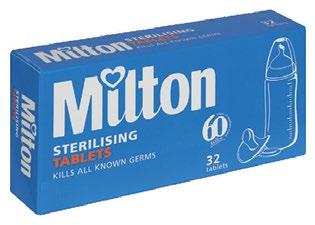



One would think that breast feeding your baby is the most “natural” thing in the world, but for many new mums it is a process fraught with difficulty. Often anxious and exhausted, mothers battle to get their babies to latch, feeding hurts, babies tire and lose weight, everyone sleeps poorly. Advice is freely given from all quarters, and invariably “tongue tie” is blamed, or at least receives a mention.
By Dr Ola Basson, Ear, Nose and Throat (ENT) Specialist, FCS ORL (SA), MBChB Cape Town
In toddlers, “fussy eating” or speech difficulties can be indicative of tongue tie.

tie?


The medical term is ankyloglossia, and it refers to the restriction of normal tongue movement by the attachment of the underside of the tongue to the floor of the mouth by the lingual frenulum. You can see your own frenulum in the mirror when you touch the tip of your tongue to your palate – it is the vertical band of tissue in the midline. During embryonic development, it holds the tongue in position; and around the 12th week in utero, it should then be resorbed, much like a tadpole’s tail. The process is not always complete, and a band that is too short, too thick, too inelastic, or too high up the tongue can lead to problems with breastfeeding, speech development, and oral hygiene (think of trying to clear food from crevices in your mouth without being able to reach them with your tongue).
The first step in diagnosing tongue-tie is to think of it. Poor latching, prolonged feeding times, clicking sounds, or pain and nipple damage can indicate tongue tie. While it may be obvious to see when baby cries, with the tip of the tongue making an “upside-down heart”, there are variants that can be trickier to diagnose. The posterior tongue tie, also known as submucosal (under the surface) can only be diagnosed on palpation. It is important to emphasise that these can be present without causing any problems or needing treatment.
In toddlers, “fussy eating” or speech difficulties can be indicative of tongue tie. The tongue is composed of different muscles involved in feeding, speech, and swallowing. Good function and muscle rest position provides a mould for correct growth and development of the dental arches and facial development.
The early diagnosis is most often made by the paediatrician or the lactation consultant. Non-surgical management can involve different breast-feeding positions or nipple shields, but dividing the frenulum – frenotomy – is a quick and easy procedure that can be performed in the rooms without the need for general anaesthesia. A small amount of local anaesthetic is applied, and the frenulum is divided with a pair of scissors. The procedure typically results in minimal bleeding. While the trauma and pain can be likened to biting one’s tongue, and is obviously upsetting for baby (and parents!) for a short time, it results in immediate improvement in tongue mobility. If the diagnosis has been delayed, the procedure is then done under a short general anaesthetic as a “day case”. This is usually only necessary after the age of 12 months. An alternative tool is a laser.
A frenuloplasty is a more extensive procedure, and is performed under general anaesthesia. This involves
Pre-hab and re-hab
Is frenotomy then the solution to tongue ties? Some argue that tongue ties are over-diagnosed and overtreated, while others emphasise the benefits of early intervention. In his book “Tongue Tied”, Dr Richard Baxter uses the analogy of one’s first pair of running shoes having their laces tied together. You can still run in them, but you are going to be slower and fall often. Once the laces are untied, you can run unhindered, but will benefit from training and coaching over time. Hence the importance of lactation support for babies, and speech and myofunctional therapy for older patients (physiotherapy to improve the function of the tongue and facial muscles). Depending on the length of time the tongue was “tied”, compensatory

the release of the frenulum and stitching the incision in a way to prevent reattachment. It is considered for particularly thick frenulums, or when scarring after a previous frenotomy has resulted in a recurrence of tongue tie.
Post-procedure care by parents is important to prevent wound scarring and re-adhesion. Exercises need to be performed at least three times a day for at least two weeks or until healing. Ideally, the lactation consultant should be seen within 24 hours of the release.
patterns would have been developed, and now correct movements have to be learned to feed, or chew and talk.
Angela Buck is a Cape Town based physiotherapist and breastfeeding consultant who specialises in oral motor dysfunction and pre/post-frenectomy treatments. She prescribes “pre-hab” before the release – training the baby’s tongue to strengthen it and improve
A frenuloplasty is a more extensive procedure, and is performed under general anaesthesia.
co-ordination before the procedure; and thereafter doing similar exercises to optimise tongue function and feeding. The rehab post-release also decreases the likelihood of formation of scar tissue.
While tongue tie treatment should not be seen as the universal panacea for all breastfeeding, speech, and oral health issues, it definitely deserves attention.
Dr Ola Basson is an ear, nose, and throat surgeon, now in full-time private practice at Kingsbury Hospital. She has 20 years of experience as a specialist, and spent four of those working at Red Cross War Memorial Children's Hospital in Cape Town. She is a mother of three, and she can still swaddle babies really well!
Address: 504 Kingsbury Medical Suites, Wilderness Road, Claremont Tel: 021 200 5848 | Email: reception@earnosethroat.co.za
Water birthing facility
3 labour wards & obstetric theatre
Vaginal births after caesarean section (VBAC)
Neonatal ICU
Private room with double bed to accommodate birthing partner
Gynaecologist & Obstetricians:
Dr Ilana Johnson

Dr Linda Murray
Dr Kate Richardson
Dr Amaal Schroeder
Dr Jacky Searle
Dr Latiefa Vinoos

Our team of Paeditricians and specialised nursing sta will do their utmost to ensure the comfort of your child in a safe, peaceful environment.
our specialised paediatric specialists
General Paediatricians
Dr Leon Jedeikin
Dr Carl Wicht
specialised paediatricians
Paediatrician and Nephrologist
Dr Paul Sinclair
Paediatrician and Allergologists
Prof Claudia Gray
Paediatrician and Neonatologist
Dr Lize Boshoff Coyles
Paediatrician and Pulmonologist
Dr Aruna Lakhan
specialists who provide paediatric services
Paediatric Dermatologist
Prof Carol Hlele
Paediatric Surgeons
Prof Rob Brown
Dr Babalwa Nondela
Dr Shamaman Harilal
Paediatric Orthopaedic Surgeon
Dr Stewert Dix-peek
Ear, Nose and Throat Surgeons (ENTS)
Dr Azgher Karjieker
Dr Eve Samson
Dr Martin Vanlierde
Dr Michele Long
Dr Paul Crosland

Paediatric Dietician
Susan Cooley-Maree
Orthopaedic, oncology, joint and Reconstructive surgeon
Dr Thomas Hilton
Dr Keith Hosking
Plastic & reconstructive surgeons
Dr Clare Neser
Dr Conrad Pienaar
Dr Gareth September
Dr Dehan Strüwig
Urologists:
Dr Larry Jee
Dr Karlheinz Jehle
Dr Allison Moore
In a medical emergency, call 0860 123 367 for our FREE advanced life support paramedic response car service. For more information about our service o erings please contact our units: Maternity: 021 506 5165 or Paediatric Ward and ICU: 021 506 5136/5137
Life Vincent Pallotti Hospital Alexandra Road, Pinelands, Cape Town, 7405
www.lifehealthcare.co.za

Comprising feeding set, teethers and educational toys valued at R2 000!
Bh’am Baby Company is locally based in Ballito, KZN. We are an online shop with a turnaround and delivery time of two days nationwide. Bh’am baby offers high-end baby accessories good for baby and our environment. Our range consists of Montessori toys and puzzles, teethers, utensils, custom-made dummy chains and oh so cute character feeding sets. All our adorable accessories are 100% natural; soft and chewable; lead and phthalate free; BPA and BPS-free; and FDA and LFGB approved. The silicone we use for our products is safe for baby as it does not retain heat yet may be used in ovens and microwave. Dishwasher- friendly.
E-mail: heather@bhambham.co.za Web: www.bhambham.co.za
To enter scan the QR code with your phone and complete the entry form online at www.babysandbeyond.co.za/competitions/
Closing date: 30 November 2024. T&Cs apply.
Instagram: _bham.baby Facebook: Bh’am baby






VITAL BABY
The Vital Baby® NOURISH Start Weaning Kit is the perfect combination of utensils and accessories for babies who are taking their first weaning steps toward independent eating and drinking. This set makes a great weaning gift or for moms and dads who are about to start weaning their babies.
• super-soft and shallow spoons for a little mouth
• bowls & pots for easy serving and storage
• super soft silicone bib with built-in mess catcher
• free flow cup to encourage sipping
• BPA, Latex & Phthalate free Vital Baby is available from Clicks / Dis-Chem/ Baby City and takealot.com www.vitalbabyshop.co.za
SCAN ME


As a relatively new dad to a beautiful baby girl, we are currently doing a lot of the odd hour wake-up feeds. My husband and I work full-time, so convenience is super important to us.
By Elroy van Heerden-Mays
Enter the Baby Brezza Formula Pro Advanced, which is an innovative milk machine that assists in preparing a bottle quickly and efficiently. Originally, when my baby woke up, I used to spend a lot of time trying to wake myself up while making a bottle! The Baby Brezza Formula Pro Advanced just requires one to put in formula*, water, press a couple of buttons and voilà! within seconds a bottle is ready at the right temperature. Gone are the days of mixing and shaking for ages to get the correct consistency.
The set-up of the machine is simple, it is aesthetically pleasing to look at – it looks a bit like a swanky coffee machine – and is compact enough to fit easily onto your kitchen counter without taking up too much space. The machine does require regular cleaning to ensure it functions optimally – but let’s be honest here, with a new baby we are super finicky about ensuring everything is clean.
The big plus of using the Baby Brezza Formula Pro Advanced is that now I get to spend more quality time with my baby. Additionally, she is a demanding little princess who wants her bottle when she wants her bottle – and daddy is able to deliver without delay!
*While ideally I
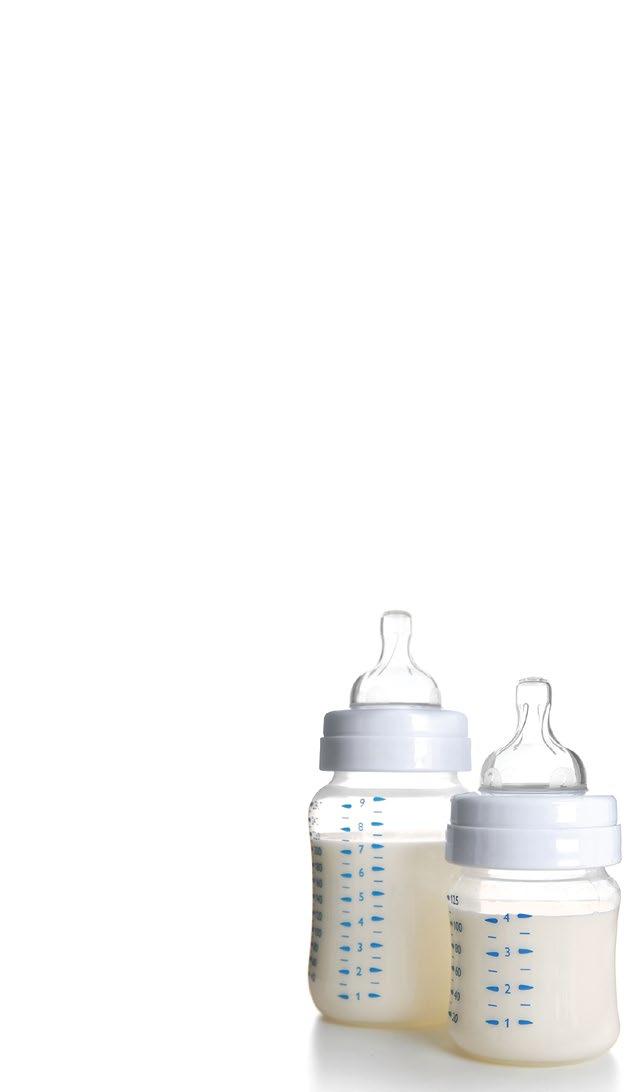








Being a mom of a 2-year-old, I’ve burped many nights and days (almost 1 000 days) and when my pregnant best friend Whatsapped me to ask, “Do all babies have to be burped?” – my immediate response was “YESSS!”.
By Dr Chanell Marthinussen, Innohealth Clinics

Burping a baby is an essential part of infant care that many parents may not even think about before having a baby. It plays a critical role in preventing discomfort and digestive issues in newborns whether bottle feeding or breastfeeding. However, some babies might burp easily and some might need some more help. Let’s explore the importance of burping, how to do it effectively, and various techniques to make the process easier for both you and your baby.
1 It relieves gas: babies often swallow air while feeding, which can lead to gas buildup in their stomachs. Burping helps release this trapped air, reducing discomfort and fussiness.
2 It prevents spitting up: by releasing air, burping can minimise the likelihood of spitting up, allowing for a more comfortable feeding experience.
3 It promotes comfort: a burped baby is generally more content, as they are less likely to experience bloating or discomfort from trapped gas.
4 It encourages feeding: a baby who feels comfortable is more likely to continue feeding effectively. Proper burping can help ensure they get the nourishment they need.
There are many effective techniques for burping your baby, and you may have to alternate and choose the most comfortable for you and your baby.
Hold your baby against you with their chin resting on your shoulder. Support their bottom with one hand while gently patting or rubbing their back with the other. This position provides comfort and allows gravity to help release trapped air.
Sit your baby upright on your lap, supporting their chest and head with one hand. Use your other hand to gently pat or rub their back. This position can be especially effective for babies who are alert and sitting well.

During feeding: it’s recommended to burp your baby midway through and at the end of each feeding.
Lay your baby face down across your lap, ensuring their head is higher than their stomach. Use one hand to support their head and the other to pat or rub their back. This method can be soothing and can help release gas.
After feeding: always try to burp your baby after they finish eating to help clear any air they may have swallowed.
Often, it might feel like all you’re doing is feeding and burping, so here are four tips for effective burping:
1. Be patient: some babies burp quickly, while others may take a little longer. If you don’t hear a burp right away, continue patting gently for a few minutes. Generally, after three good burps, babies are more comfortable.
2. Change positions: if one position doesn’t seem to work, try switching to another technique. Babies may respond better to different positions at different times.
3. Watch for signs: look for cues that your baby is uncomfortable, such as fussiness or arching their back, which may indicate they need to be burped.
4. Keep a cloth handy: keep a burp cloth or bib on hand, as some babies may spit up after burping. Burp cloth that helped me –large white toweling nappies!
Burping is a vital part of caring for your baby, ensuring their comfort and aiding digestion. By using the techniques outlined above and being attentive to your baby's needs, you can help them feel more at ease during and after feeding. Remember, each baby is different, so patience and practice will help you find the best approach for your little one. Happy parenting!
Dr Chanell Marthinussen
Dr Chanell Marthinussen, a general practitioner and founder of The F-word, hails from Bonteheuwel, Cape Flats. Graduating from Stellenbosch University in 2018, she completed her internship at Paarl Hospital and community service at Mowbray Maternity Hospital. Passionate about women's health, Dr Marthinussen educates females on reproductive health and menstrual hygiene through her business. Currently, she heads the MyPocketHealth virtual healthcare platform and is also the base general practioner at the Innohealth Medical Centres Tyger Waterfront branch. She aspires to specialise in Obstetrics and Gynaecology as her mission is to empower women to make informed decisions about their health and futures.


Epi-max® makes bathtime easy! Our hypo-allergenic, paraben and fragrance-free range of emollient products are mild enough for all skin types, including dry skin and dry skin conditions like eczema and psoriasis. Our Glycerine 100g bar; Bathe 250ml bottle and Body Wash 450ml pump bottle can be used daily to gently cleanse and soothe sensitive skin. Try our Emollient Cream 400g tub to moisturise and hydrate young skin. Available from Dis-Chem, Clicks, independent pharmacies, leading retailers and Takealot. www.epimax.co.za

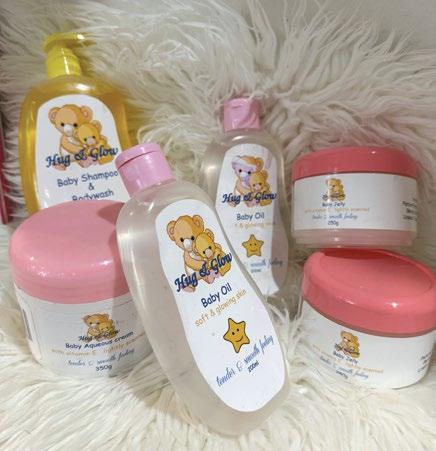
Hug and Glow Baby Oil – keeps babies' and kids' skin soft, supple and glowing. Formulated to be gentle and has no paraben or dyes. Baby Shampoo & Body Wash – cleanses from head to toe and tearfree, it balances baby’s (pH) keeping it from drying, cracking and peeling. Forms lots of foam in water and leaves the baby’s skin soft and smooth.
Baby Aqueous Cream – lightly scented with vitamin E, it protects the baby's skin from dryness. Free from colourants and paraben. It is suitable for the whole family.
Baby Jelly – great to use for reducing incidence of nappy rash. Helps soothe the baby’s bottom. Email: neliswa.tyembile@gmail.com Instagram: (hugandglow)


Every mama wants to raise a confident, kind and brave little princess
That is why Refilwe Xaba took it upon herself as a mama to create a hair care brand that is both safe from harsh and harmful chemicals for those delicate scalps and hair strands, and a brand that shows little queens just how special and unique they are. With a nationwide footprint, Glolooks celebrates our different shades of melanin and our different strokes of kinky, coil and curly hair.
Email: info@glolooks.co.za
Social Media: Glolooks Kids www.glolooks.co.za















Paediatric sleep disorders are important as they affect both the child and the family unit. Sleep deprivation can have a negative impact on scholastic achievement; by causing daytime sleepiness and irritability, it can also contribute to behavioural problems and learning difficulties.
By Dr Mandy-Lyn Meyer, Paediatrician at Melomed
Dyssomnias present with difficulty initiating or maintaining sleep while parasomnias result in disruption of sleep.
Parasomnias
Common examples of parasomnias include:
• Sleepwalking (Somnambulism) occurs in 17% of children. The child will walk in their sleep, with eyes open, but they are difficult to arouse;
• Sleep talking (somniloquy);

• Confusional arousals affects up to 17% of kids. The child is ‘sleep drunk’ with inappropriate behaviour or slurred speech, and after the child wakes there is no memory of the event;
• Sleep terrors occur in 6.5% of children. The child suddenly cries or screams in their sleep as if experiencing something terrifying, he or she may even walk about. The child is very difficult to arouse at the time and has no memory of the event, once it has passed; and
• Nightmares affect up to 50% of young children. Nightmares usually occur in the second half of the night and there is memory of the event.
Most parasomnias affect otherwise healthy children and commonly improve over the course of adolescence. They are viewed as transient developmental phenomena and general measures, like good sleep hygiene, reassurance, increased total sleep time and scheduled wakenings may help.
Examples of common dyssomnias include:
• Obstructive sleep apnoea (OSA), a condition in which the upper airway is obstructed and the child wakes up gasping for air or may stop breathing for a period of time (apnoea). The primary cause in children is enlarged tonsils and adenoids, other contributory factors include obesity and airway issues. These children often present with snoring but OSA can also contribute to morning headaches and bed wetting. Daytime sleepiness may occur, but children more often display symptoms of poor concentration and inattention, depressive symptoms or even behavioural issues. In severe cases, OSA can lead to pulmonary hypertension and right sided heart failure. Treatment involves weight loss where appropriate, adenotonsillectomy and continuous positive airway pressure if other measures fail.
• Behavioural insomnia of childhood (BIC) affects up to 30% of children and is a learned inability
to fall asleep. One subtype is sleeponset association type, where the child demonstrates reliance on a sleep aid, for example a parent rocking the child to sleep. In limitsetting type, the child will exhibit defiance around bedtime, asking for one more story or to go to the bathroom etc. to delay sleep. However, most children will exhibit features of both (combined type). BIC prevention is better than cure; this includes structure to feeding times, nap-times and strict bedtime routines. Sleep training techniques are sometimes used to treat this disorder.
• Delayed sleep phase disorder is more common in adolescence, it is characterised by the sleep-wake cycle shifting to later hours. An example is the child who goes to bed regularly at 2am and then struggles to wake for school. Treatment involves good sleep hygiene, setting limits on screen time and, occasionally, melatonin supplementation.
• Restless leg syndrome occurs in 2% of children and although difficult to diagnose is described as

an unpleasant sensation in the legs, accompanied by an urge to twitch or thrash when going to bed. Children may present with features similar to ADHD, difficulty sleeping, growing pains and bedtime resistance. Treatment involves sleep hygiene, exercise, avoiding precipitating factors like caffeine, nicotine and drugs like antihistamines and certain antidepressants. Iron deficiency is associated and treating this may help improve symptoms.
Sleep problems are common, affecting up to 50% of children. They can have a negative effect on growth and behaviour if ignored. It is important to practise good sleep hygiene, the routine around bedtime, to help prevent these disorders. Examples of sleep hygiene include limiting or eliminating caffeine intake, which is present in tea, coffee and fizzy cool drinks.
Encouraging physical activity and outside play is helpful, as inactivity during the day may lead to difficulty falling asleep. It is important to create a calm environment (pre-sleep); try to avoid screens and gadgets in the bedroom and other toys which may distract the child from sleep.
Establish a routine sleep schedule that promotes independent sleeping (without a parent), and include winding down activities like a bedtime story or a warm bath before bed. It is advisable to avoid heavy meals late in the evening which may impact on sleep patterns.
Last of all, there is a relationship between sleep disorders and psychiatric and medical disorders. For example a child suffering from depression may also suffer from sleep disturbance, however sleep issues can also aggravate depressive symptoms. Therefore please consult a medical specialist if you have any concerns about your child and their sleeping patterns.


Infant baby massage is not a therapy but a powerful way for parents to interact with their babies. It teaches parents to connect again, as while massaging, parents communicate and interact with their baby by ‘reading’ the baby’s cues.
By Petra Scherf, International Association of Infant Massage (IAIM)
Is my baby enjoying this? Does my baby prefer certain areas to others? Is my baby tired or restless? If a baby is battling digestive issues, the baby may not like his/her tummy to be massaged. The parent would have to sensitively build up the massage strokes for this area.
1 The benefits of nurturing touch baby massage are broad; however, the two most significant benefits are:
The release of oxytocin in both the parent and baby. Oxytocin is a natural hormone that releases stress and is usually released during pregnancy, labour, birth, and breastfeeding. The great news is that oxytocin is released with awesome benefits for both baby and parent through infant massage.
2
The bonding process between parent and baby. Sir John Bowlby – psychiatrist and psychoanalyst (1969), states that bonding is “A lifelong process beginning with a reciprocal, interactive system between the parent and the infant.” These days, it is not easy to bond with a newborn baby as the demands of life are intense. Learning to massage your baby helps form good bonding and attachment with your baby quickly, and it has many other benefits for both the parent and the baby.
Bonding is a process that involves the release of oxytocin, neural pathway development, and consistent engagement with a parent through the senses (eye contact, touch, smell and communication). The first sense that develops in utero is touch. It is also the last sense we lose. Touch helps a parent to understand their baby and its cues.

Touch is a language a baby immediately understands; touch releases hormones through skin-to-skin contact. Touch helps us relax and encourages feelings of trust and safety in our baby. It is the most crucial element of bonding. Other elements are eye contact, odour, hearing and speaking, crying, feeding, smiling, imitation, entertainment and biorhythms. All these elements are enhanced when you massage your baby through a nurturing touch.

Interaction with a parent brings numerous benefits to a baby, such as imitation and pre-language skills development. It fosters feelings of love, safety, trust, empathy, and a sense of belonging and togetherness. Bonding through quality time with undivided attention from the parent leads to a more secure attachment.
Relaxation is another significant benefit, as it improves sleep, regulates behavioural issues, reduces stress hormones, and increases oxytocin levels. Interaction also relieves various discomforts like gas, colic, constipation, digestive cramps, teething discomfort, growing pains, muscular tension, excess mucus, congestion, physical and psychological tension, touch sensitivity, and excessive crying.
Moreover, it stimulates language development, strengthens neural pathways,
enhances learning ability, promotes myelin formation, and increases growth. It also stimulates all bodily systems, including circulatory, digestive, hormonal, nervous, lymphatic, immune, respiratory, vestibular, proprioceptive, sensory integration, and overall body awareness.
For parents, interaction with their baby promotes bonding and deepens secure attachment, helping them better read cues and understand their baby’s needs. It boosts parental self-esteem and reduces stress hormones while increasing oxytocin levels, which can decrease the risk of postnatal depression. Additionally, involving siblings in these interactions fosters a sense of family unity. Improved sleep for everyone and reduced conflict are notable benefits, alongside increased respectful touch, enhancing the family dynamic.

Duration: 5 weeks (1 session per week)
Courses are child-led, so even if your baby is asleep, you carry on learning using our “dolls”. If your baby needs a feed or is restless, you can attend to your baby’s needs in a relaxed and friendly environment.
Book now by contacting: Petra – 083 326 3290 Annarita – 083 287 6735
REFERENCE:
Stand a chance to win!
The Barbie® Dream Closet™ inspires kids to create endless looks and unlimited story possibilities! This modern pink closet opens 60+ cm, has 15+ storage spaces including a pop-up hanging area that creates a second story, a hamper chute, a full length mirror and desk space. Also includes 35+ fashions and accessories (dolls not included). Kids can use the doll stand and mirror to model their looks; put laundry in the hamper chute and use the desk space for more storytelling fun. Includes five complete outfits, including accessories, for any occasion: two trendy day outfits, an evening look, nurse and lifeguard outfits.




South Africa's first luxury children's clothing store, Mio Mondo, is the ultimate place to shop. Catering to every age, from babies to teens, Mio Mondo offers a curated selection of premium-quality apparel.
Indulge your precious treasures in exquisite collections from renowned brands like Moschino, Karl Lagerfeld, Barrow, Dsquared2, Michael Kors, Marc Jacobs, Boss, Hugo, DKNY, Le Toy Van and more. Discover playful everyday pieces that seamlessly transition into statement outfits, catering to every age group and style.
Create magical moments with Mio Mondo! Visit their stores in Sandton City or Durban's Oceans Mall. You can also shop online at www.miomondo.co.za for the ultimate convenience. You can email them on info@miomondo.co.za for any inquiries.
Barbie® Dream Closet™ Playset and Accessories
Comprising 1 x Barbie® Dream Closet™ Playset and Accessories valued at R1 449.99!
To enter scan the QR code with your phone and complete the entry form online at www.babysandbeyond.co.za/competitions/ Closing date: 30 Nov 2024. T&Cs apply.

Octohoodie serves as a gorgeous cover-up in the sun, a warming wrap in a cold wind, and, even as your own private “changing room”. They were designed especially for you – the water-lovers, the out-andabouters, the active families. They are designed to get you geared up for fun, fast and easily! Made from performance microfibre, they are free-fitting, soft, flexible and quick-drying. Use yours on the beach, for swimming lessons, cold water immersion or even as a seaside “changing room”.

Octohoodie improves any occasions all year round. Once you’ve lived in it, you won’t want to live without it!
www.octohoodie.com
info@octohoodie.com








By Dr Savanah Smith, Innohealth Clinics

Avoid known triggers
• House dust mites: replacing carpets with wooden floors or tiles, regular vacuuming with a high efficacy particulate air (HEPA) filter and removing soft toys from the bedroom.

HSpringtime is known for increased pollen levels, which can trigger allergic reactions in many people.
ay fever, also known as allergic rhinitis, is a common allergy that causes sneezing, itchy eyes, a runny nose and congestion. It is often triggered by pollen, grass, dust or mould.
Allergic rhinitis not only causes significant discomfort but also a reduction in quality of life. In addition to this, its complications can be severe; these include asthma exacerbations, sinusitis, ear infections and reduced quality of sleep. In children, reduced sleep quality can lead to learning difficulties at school due to chronic fatigue.
• Mould: ensure adequate ventilation and clean mould-infested areas with bleach.
• Outdoor allergens like pollen: wearing a mask and avoiding outdoor activities during peak pollen periods. For more information on monitoring pollen count, you can visit https:// pollencount.co.za/report/ for weekly reports on pollen count in your area, allowing you to take the necessary precautions.
Nasal steroid sprays (e.g. Flomist, Avamys, Genemist)
This is the best treatment for allergic rhinitis. These nasal steroid sprays are great as they work directly on the nasal passages by reducing inflammation and swelling. They must be used daily as
they take a few days to work and cannot be used occasionally for symptom relief. It’s also essential that they are used correctly; for a step-by-step guide on how to use nasal sprays, you can go to https://www.allergyfoundation.co.za/ allergy-information/learn-how-to/nasalspray-and-washouts.
Oral antihistamine syrups or tablets
The non-drowsy antihistamines like cetirizine, loratadine or fexofenadine are preferred, and these assist by blocking the effects of histamine in the body. Histamine is responsible for the allergic response in our bodies. When we block the effects of histamine, we decrease the symptoms of allergic reactions.
Nasal decongestant sprays (oxymetazoline, e.g. Iliadin)
Nasal decongestant sprays are great for managing congestion in the short term. However, they cannot be used for more than 3-5 days at a time as they can cause rebound congestion and worsen the situation.
Saline rinses
These are great for children and adults as they assist with removing irritants and clearing mucous buildup from the nasal cavity.
immunotherapy
This is reserved for patients who have failed all the above treatment options while avoiding all possible allergy triggers. Treatment is conducted by an allergy specialist and involves introducing the body to the trigger allergen over time (2-3 years), thus tricking the body into becoming resistant to that particular allergen.
Allergic rhinitis affects 10-40% of children and adults worldwide and, if left untreated, can significantly impact your quality of life. People with allergies need to take precautions during these seasonal months, such as staying indoors on high pollen days, keeping windows closed, using air purifiers, and working together with your healthcare provider to develop a personalised treatment plan to enjoy a better quality of life.
Hay fever, allergies, dry coughs, asthma… these are the conditions that are most experienced during Spring and Summer seasons. Because of the heat and humidity, there is a lack of air movement which can cause pollutants like dust and pollen to be trapped in the airways. And although flu is prevalent in cold weather, we are also still susceptible to flu because of sudden temperature changes in Summer when we move from air-conditioned rooms to outdoor heat, or sudden rainstorms.
With a higher salt quantity in the product than that of the body, hypertonic saline draws fluid from the inflamed, swollen lining of the nose, sinuses, larynx and bronchi to help open the airways. This then helps wash out those trapped particles.
In addition, we have also launched our new anti-inflammatory, antibacterial, antiseptic Skin Healing Cream to help for those skin irritations, rashes, mosquito bites, cuts and sunburn.
Helping you Breathe Better & now Feel Better too!


Around spring we start observing an increase in allergens floating in the air of our environments leading to allergic reactions. Antihistamine medicine can assist with alleviating allergic symptoms.
By Bradley Mphaho, Pharmacist at Medipost Pharmacy
Allergies are defined as an overreaction of the body’s immune system to something which is generally not harmful. This is when our body’s defence system identifies a suspected danger to the body then starts trying to fight the perceived threat, which is termed an allergic reaction.
Common signs and symptoms of allergies include but not limited to runny nose, wheezing, watery eyes, sneezing, postnasal drip, skin irritation and skin rashes.
There are different types of allergies which are classified according to the causative agent, i.e. food, indoor and seasonal allergies. The most common are food allergies, where allergens are milk, peanuts and wheat, followed by seasonal allergies, which South Africans experience in the spring.
When spring comes, flowers start to bloom, creating more pollen in the air and triggering some people’s immune systems to produce an allergic reaction. Allergies can be managed through

different mechanisms, however, there is a group of medications called antihistamines, which are available over the counter (OTC) at pharmacies including shop.medipost.co.za, although it is not advisable to keep using OTC medications without consulting your doctor or medical practitioner who may prescribe other treatment.
The group of medicines is called antihistamines because they work by blocking histamine, which is a chemical released in the body associated with uncomfortable allergic symptoms such as streaming eyes and noses, swelling and itching. By blocking the histamine, these symptoms are reduced, bringing short-term relief to allergy sufferers.
Antihistamines are further divided based on their mechanism of action (how
they work), which may result in various side effects. Some of the common side effects include dizziness, dry mouth, sedation, constipation, and if used over an extended period, the person may build up a tolerance. However, if a patient is concerned about the sedation from first generation antihistamines, a pharmacist can recommend later generations which do not have the sedative effect.
Antihistamines are often used for more than just allergic reactions, as they have proven to be effective against nausea and drowsiness caused by motion sickness or vertigo; this is experienced as a “spinning” sensation when travelling by car, boat and aeroplane. To help prevent motion sickness, the antihistamine will need to be taken an hour to two hours before embarking on the journey.
Please remember to inform your pharmacist about any medicine you may be taking, especially blood pressure medicine, before taking any new medication –including OTC medication. It is also vital that pregnant and breastfeeding women consult their treating doctor and inform the pharmacist to confirm safety before taking medicines.
STÉRIMAR™ baby Nasal Hygiene is recommended daily for babies from 0 to 3 years old to:
Gently cleanse the nose and eliminate impurities.
Moisturise and restore the natural moisture of the nasal mucosa.
STÉRIMAR™ baby helps prevent ear, nose and throat disorders by reinforcing the nasal mucosa’s defences.
STÉRIMAR™ baby helps to improve breathing to facilitate a good sleep and bottle or breastfeeding.
Age indication:
STÉRIMARTM baby is recommended daily for babies from 0 to 3 years old. Spray briefly 1 to 2 times in each nostril. Use 2 to 6 times a day or more if required, in each nostril.¹
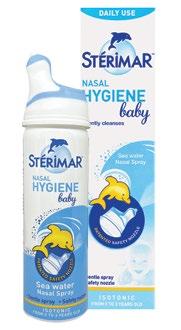
How to use PoxClin™ CoolMousse?
Advantages of PoxClin™ CoolMousse with 2QR Bio-Active Blocker
• The 2QR-complex binds itself to harmful bacteria and blocks it from attacking the skin, thus lowering the risk of infection and supporting the skin’s natural healing process.4
• PoxClinTM CoolMousse provides relief from itchiness and protects the skin, resulting in less scratching and fewer infections.4
• Supporting the skin’s natural healing process.4
• PoxClinTM CoolMousse is a light, smooth mousse and is quickly and easily absorbed by the skin.4
PoxClinTM CoolMousse helps to provide relief from skin irritation, itching, burning and sensitivity associated with chickenpox. It has a cooling and soothing effect and conditions the skin whilst providing relief.4
• PoxClinTM CoolMousse is for external use only.


Lactobacillus rhamnosus GG reduced diarrhoea duration by one day and reduced number of loose stools per day.²
Suitable from birth³
Flavour free³
Sugar free³
No need to refrigerate³
Colourant and preservative free³
entiro™ PROBIOTIC DROPS dosage:
Take 0,25 mL (6 drops) per day. Contains freeze-dried Lactobacillus rhamnosus GG 1 x 109 colony forming units (CFU’s). Shake well before use.³
Can be given:³
Directly into the mouth | By spoon | On the pacifier | On the bottle teat

• Shake the bottle before use. When first using PoxClin™ CoolMousse, 2 to 3 pumps of the foam dispenser may be needed for the foam to emerge. Apply at least 3 times a day or whenever relief is required.4
• Apply a generous amount and gently dab into the skin. PoxClin™ CoolMousse is a light, smooth mousse and is quickly and easily absorbed by the skin.4
When kids need something to soothe the itch of chickenpox4
PoxClin™ CoolMousse for children with chickenpox4
Itch and burn relief
Cooling and soothing effect
Conditions and protects the skin
Promotes healing
For prevention of scarring4
• Frequent application of the mousse may enhance its effect.
• PoxClin™ CoolMousse provides relief from itchiness and protects the skin, resulting in less scratching and fewer infections.
• It is recommended to apply the mousse prior to change of clothing, or whenever relief is required.
STÉRIMAR™ Baby (Nasal spray solution). Class A Medical Device. Each 100 mL contains Sea water 31,82 mL and purified water qsp 100 mL.
S0 entiro™ PROBIOTIC DROPS. D 34.9 Complementary Medicine: Health Supplements, Probiotics. Each 0,25 mL (6 drops) of entiro™ PROBIOTIC DROPS contains freeze-dried Lactobacillus rhamnosus GG 1 x 10⁹ colony forming units (CFU’s).
S0 PoxClin™ CoolMousse. D 33.6 Complementary Medicines: Discipline-Specific Traditional Claims. Western Herbal Medicine. Each 100 ml contains Aloe barbadensis extract 6,00 g. This unregistered medicine has not been evaluated by the SAHPRA for its quality, safety or intended use. For full prescribing information, refer to the Professional Information.
References:
1. STÉRIMAR™ Baby (Nasal spray solution) Instructions for Use.
2. Li, Y. et al. Efficacy of Lactobacillus rhamnosus GG in treatment of acute pediatric diarrhea: A systematic review with meta-analysis. World J Gastroenterol 25(33), 4999-5016 (2019).
3. Professional information of entiro™ PROBIOTIC DROPS.
4. PoxClin™ CoolMousse Patient Information Leaflet.
ACTOR PHARMA (PTY) LTD. Co. Reg. No. 2008/008787/07. Unit 7, Royal Palm Business Estate, 646 Washington Street, Halfway House, Midrand, 1685, RSA. Website: www.actorpharma.co.za Customer Care: 080 222 6662.
CIPLA MEDPRO (PTY) LTD. Co. Reg. No. 1995/004182/07. Building 9, Parc du Cap, Mispel Street, Bellville, 7530, RSA. Website: www.cipla.co.za Customer Care:
[1397563082]
By Dr Clayton Mentoor, Innohealth Clinics
Allergies and eczema (atopic dermatitis) are closely linked.
They share a common mechanism of action and frequently occur together.
Here are some critical connections between eczema and allergies:
Both allergies and eczema involve an overactive immune response. In people with eczema, the immune system reacts too strongly to external triggers, causing inflammation and skin symptoms. Similarly, allergies are caused by the immune system’s hypersensitivity to certain substances (allergens).
Genetic predisposition plays a significant role in both conditions. Mutations in the gene responsible for producing filaggrin, a protein essential for skin barrier function, are common in individuals with eczema. This compromised skin barrier can make it easier for allergens to penetrate the skin and trigger an immune response.
The “atopic” or “allergic march” refers to the progression of allergic conditions, where individuals with eczema in early childhood are more likely to develop allergic rhinitis (hay fever) and asthma later in life or vice versa. These three conditions typically appear together. If a child presents with one, they may


Environmental allergens such as pollen, dust mites, pet dander, grass, skin products, type of clothing material and certain foods can trigger or worsen eczema symptoms. When the skin barrier is compromised in eczema, it allows these allergens to penetrate more efficiently, leading to allergic reactions and further inflammation.
Both allergies and eczema involve similar inflammatory pathways, particularly involving T-helper cells (Th2 cells). These cells release cytokines that promote allergic inflammation, contributing to the symptoms of both conditions. In an allergic condition, the body has a heightened response. It is more easily caused by a trigger, as opposed to someone who does not have an allergic phenotype.
Elevated levels of Immunoglobulin E (IgE), an antibody associated with allergic responses, are often found in individuals with eczema. High IgE levels indicate a heightened immune response to allergens, linking the two conditions.
eczema and allergic reactions. Managing these triggers is crucial for controlling symptoms of both conditions and preventing damaging after-effects.
The management of eczema often involves addressing underlying allergies. These may include:
• Allergen avoidance: identifying and avoiding allergens that trigger symptoms.
• Medications: antihistamines and corticosteroids manage allergic reactions and reduce inflammation. Moisturisers and emollients soothe irritated skin.
• Skincare: maintaining a proper skincare routine to strengthen the skin barrier and prevent allergen penetration. Also, wearing clothing to protect skin and sensitive areas.
Understanding the links between allergies and eczema can help develop a comprehensive treatment plan to manage both conditions effectively.



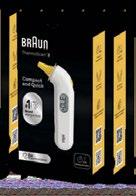



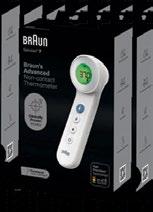
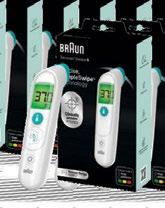
Take the guesswork out of temperature measurement with the Age Precision™ Technology featured on Braun thermometers.
Did you know that the definition of fever changes with age?*
What is fever in a newborn can be a normal temperature in a fouryear-old. To help you interpret your child’s temperature, Braun has developed the unique Age Precision™ Technology.
Simply select your child’s age and the colour-coded display will help you interpret temperature readings and act accordingly, and . green (normal temperature) yellow (fever) red (high fever)









An estimated three million people suffer from asthma worldwide. Asthma is a chronic condition affecting the airways of the lungs. The symptoms of asthma are wheezing, difficulty breathing, and shortness of breath. Asthma tends to run in families like hay fever and eczema. There is no cure for it, but if kept under control, those suffering from asthma will be able to live normal lives.
By Dr MT Ismail
1Do allergies have anything to do with asthma?
Studies have shown that 50% of asthma cases are linked to allergies. These allergens include cats, pollen, mould and dust mites. Inflamed airways in asthmatics are more sensitive to allergens, and hence, asthma is more likely to be triggered in an environment with a high allergen load.
Can moving to a different location cure asthma?
Moving to a dry climate will improve asthma symptoms. It is worth noting that this is not a permanent solution. Hence, moving will not cure the disease. Cleaning one’s aircon unit every year, keeping the windows closed during pollen season and using a dehumidifier can also reduce asthma triggers in every home.
Is it true that people with asthma cannot get the flu shot?
No. It is highly recommended by The Centers for Disease Control and Prevention (CDC) that people should get their flu vaccinations annually. Unfortunately, according to the CDC, about two-thirds of adults do not get these vaccinations each year, resulting in an increased risk for asthma attacks triggered by the common flu.
Can one outgrow asthma?
Is asthma just all in the head?
The disease affects the airways – it’s not psychological. Asthma is caused by a reaction when the immune system is triggered due to various external factors in the air we breathe, causing the lungs to react. The stress experienced during an attack or at the onset of an attack does not make it a psychological problem. Even when the sufferer is not experiencing an attack, medically, their lung cells would still reveal their condition.
6
Are asthma medicines habit-forming?
Asthma medications are not addictive. Asthma is a chronic disease; therefore, long-term medication is needed to manage the condition and prevent asthma attacks. It is essential always to follow your doctor’s recommendations for treatment.
Although asthma is a chronic condition, which develops and is usually diagnosed in childhood, it cannot be outgrown as thought by many sufferers. If asthma develops later, in adulthood, it is due to the pre-existence of the condition, which may have been so mild that it remained undetected until much later in life, possibly due to changes in the environment, a respiratory virus, smoking or other external reasons. As the sufferer ages, their symptoms may ease and become even more manageable and negligible, but it will always be there.
7
Do asthma medications stop working over time?
Asthma medication remains effective if used continuously and correctly as your doctor prescribes. Those with mild asthma can use quick-relief inhalers to treat asthma when symptoms appear. People who experience more severe asthma attacks may need daily medication to reduce blocking of the airways. When asthma is more severe, taking medication only to relieve symptoms is not enough treatment because the underlying issue – airway inflammation – is not being adequately treated.
8 4
Are people with asthma allowed to exercise?
Doing exercise can improve lung function and help you maintain a healthy weight. It also decreases the risk of asthma attacks, and exercise helps one breathe easier. Consult with your doctor before beginning an exercise programme. Exercise is as essential for people with asthma as it is for anyone else. If medications are taken as prescribed, people with asthma can exercise normally and often vigorously. People with asthma are better off exercising in an environment with high humidity. During exercise, the narrowing of airway passages can be caused by dry air. Doing a slow warmup and cool-down can help prevent narrowing of the airways. The goal for anyone with asthma should be to live a normal and healthy lifestyle.
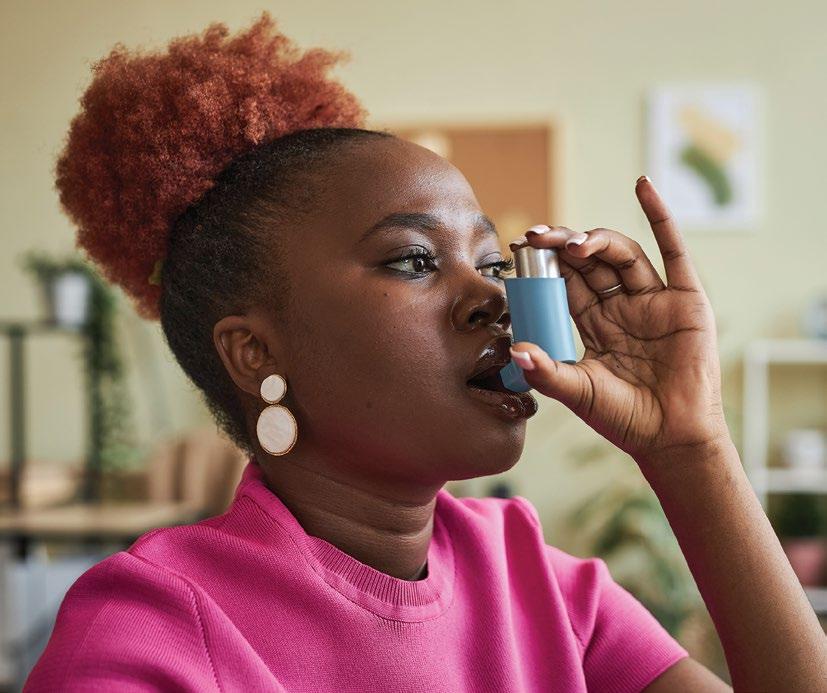
Is asthma easy to control?
This all depends on how well you follow your treatment plan. Treating asthma can be challenging to manage. The main goal for every asthmatic is to prevent chronic symptoms and asthma flare-ups and to maintain normal lung function. Your doctor and you should aim to achieve this without serious long-term effects from asthma or the medication.
12
Is the home nebuliser a good investment?
9
10
Should you only use asthma medicine to stop an attack?
Depending on the severity of the four categories of asthma, sufferers will need daily doses of a prevention or controller medicine to control inflammation of the lungs and to minimise the asthma attack.
11
Can dietary supplements help ease asthma symptoms?
A well-balanced diet, low in fats and red meats, and higher in whole grains, fruits and vegetables is highly recommended to all those suffering from asthma. There is no proof that specific nutrients will help treat asthma.
13

Home nebulisers are not the same as nebulisers used in hospitals. Hospital nebs are oxygen-driven, and oxygen itself is a potent treatment option in the treatment of asthma. Technology has changed tremendously over the past 30 years. A spacer with a mask and an inhaler is as effective as a home nebuliser. However, far less medication is used (a few drops when using the pump vs ½ tablespoon of medication when using a nebuliser). Hence, the side effects are far less when using asthma pumps than with home nebulisers.
Does asthma medication weaken the heart?
Yes. But if used correctly, the side effects are minimal; however, untreated and poorly controlled asthma is even more dangerous.
Asthma can result in death, brain damage, or failure to thrive in children. It is important not to ignore asthma; pretending it’s not there will also not cure asthma.
About Dr MT Ismail
Dr MT Ismail is a qualified paediatrician with extensive experience caring for well and sick babies and kids. His special interests are neonatal care, allergies, asthma, feeding problems and developmental problems. He graduated in 1997 and worked as a general practitioner up until 2004. After having served the community as a general practitioner, he then worked in various paediatric settings where he spent a significant amount of time in the Neonatal ICU and Paediatric ICU units of Tygerberg Hospital, Mowbray Maternity, Somerset Hospital, Red Cross Children’s Hospital as well as Groote Schuur.
BENEFICIAL TO THE CARDIOVASCULAR SYSTEM AND HIGH BLOOD PRESSURE
RELIEVES STIFF & PAINFUL JOINTS
IMPROVES THE IMMUNE SYSTEM
BENEFICIAL FOR DIABETICS
IMPROVES BLOOD CIRCULATION
IMPROVES SKIN ELASTICITY
BOOSTS IMMUNE FUNCTION
IMPROVES MOOD & CONCENTRATION
REDUCES ADD SYMPTOMS
IMPROVES BRAIN MESSAGING FUNCTION
ENCOURAGES HEALTHY SLEEP PATTERNS





Anterior nose bleeds: these occur when the blood vessels in the front of the nose bleed causing blood to flow out of the nostrils. This type of nose bleed occurs more commonly.
Posterior nose bleeds: these occur in the back of the nose and blood often flows down the back of the throat. These types of nose bleeds can be dangerous and often require medical attention.
Nosebleeds (medical term: epistaxis) are extremely common and although scary, most nosebleeds are usually not serious. Most nosebleeds can be treated at home successfully.
By Dr Savanah Smith, Innohealth Clinics
• Irritation: frequent nose picking or blowing of the nose.
• Direct injury: trauma to the face can damage the lining of the nose.
• Foreign bodies in the nasal cavity.
• Inflammation due to allergies or infection.
• Changes in altitude or air travel.
• Changes in humidity: climates with low humidity can cause dry nasal tissue increasing the risk of nose bleeds.
discussing the use of blood thinners with your doctor –in some cases the advantage of using blood thinners may outweigh the risk. 1 2
• Medications like blood thinners (aspirin, warfarin) and non-steroidal anti-inflammatory medications.
• Liver diseases that interfere with blood-clotting factors like liver cirrhosis.
• Blood disorders such as haemophilia or leukaemia.
If you get nosebleeds frequently, the following measures can assist in decreasing the frequency of nosebleeds:
using a humidifier in your bedroom, especially when the air is more dry;
keeping the nasal cavity moist with the use of saline nasal sprays;
avoiding picking your nose; and
Remain calm.
Lean slightly forward (do not lie down or tilt your head back).
1 2
If there is any blood in your mouth, spit it out. Do not swallow it.
Grip the soft part of both of your nostrils for at least 10-15 minutes (do not grip the bony ridge of the nose). Use a clock to monitor the time.

Do not release the pressure to check if the bleeding has stopped until the full 10-15 minutes have completed.
3 4 5 6
If you want, you can apply a cold compress or ice pack to the bridge of your nose to further help with blood vessel constriction to slow down the bleeding.
If you continue to bleed despite the above steps, seek medical attention.
7
8
If you have followed all of the above steps and your nose continues to bleed, repeat the above steps again and apply pressure for 30 minutes.

Dr Savanah Smith
Dr Savanah Smith is a dedicated general practitioner at Innohealth Medical Centre in Woodstock.
If you suspect that you have a posterior nose bleed-blood flows from the back of the nose down into the throat- you should seek medical attention as these nose bleeds cannot be managed at home.
If you suspect that your nose bleed is due to a possible foreign body, seek medical attention for further treatment.
Graduating from the University of Stellenbosch in 2016, Dr Smith completed an internship at Tygerberg Hospital and community service in Mitchells Plain. Inspired by a family tradition of helping others, Dr Smith emphasises holistic, patient-centred care. Passionate about mental health, childcare, and women’s wellness, she aims to educate and empower patients for better health decisions. Outside of work, Dr Smith enjoys spending time with family and friends, reading, and outdoor activities.
Discover the features of Braun's digital ear ThermoScans and No-Touch Thermometers. Whether purchasing the Braun PRT2000 digital stick thermometer, or the feature-rich Braun IRT6525+ Ear Thermometer or Braun BNT400 Forehead thermometer with no touch and touch functions, Braun offers a comprehensive range of thermometers. If it’s peace of mind you’re after, only Braun offers patented Age Precision® technology – age-adjustable fever guidance, which takes the guesswork out of interpreting a child’s temperature knowing that the colour-coded display ensures easier interpretation of results.
Did you know that every Braun medical device has a unique code to enable you to purchase your Braun thermometer through your medical scheme subject to the T&Cs of your medical scheme?
Available at Dis-Chem, Baby City, Clicks, Takealot, and MediRite Plus. www.braunbaby.co.za




Panado®’s paracetamol-based paediatric syrup Grape flavour1 is colourant-free, tartrazine-free, alcohol-free, and sugar-free. It provides soothing relief from pain and fever in little ones. Parents trust2 Panado® to be gentle on little tummies3 and to provide comfort to babies and kids.
Always administer using a medicine measure or a syringe. Do not exceed the recommended dose. Dosage details can be found at https://panado.co.za/dosage-calculator and are calculated according to your child's age and weight.
Approx. RSP for 100ml – R65.95 and 50ml R38.95. Panado® products are available from Baby City, Pick n Pay, Checkers including Hypers, Shoprite, Clicks, Dis-Chem and independent pharmacies. For more information, visit https://panado.co.za and join the conversations on Facebook. 2023032710267635
REFERENCES:
1. Panado ® Paediatric Alcohol Free - Grape Flavour. Approved package insert. October 2022.
2. Circana, MT, November 2023 MAT.
3. Bannwarth B. Gastrointestinal safety of paracetamol: is there any cause for concern? Expert Opin Drug Saf. 2004 Jul;3(4):269-72. doi: 10.1517/14740338.3.4.269. PMID: 15268644. Available from: https://pubmed.ncbi.nlm.nih.gov/15268644/#. Last accessed February 2023.
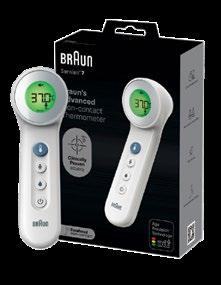

Flugon™ provides a range of supplements that not only support immune system health all year round, but also support and helps alleviate the symptoms of colds, flu and allergies.
Flugon™ provides a family offering1 and included in the range is the Flugon™ Fizzy Kidz Effervescent, specifically formulated to support children’s immune system health and help alleviate cough, sore throat and a blocked or runny nose.
Flugon™ Fizzy Kidz is available as a tasty grape effervescent tablet and contains herbal extracts Elderberry and Pelargonium which have immunostimulant properties; as well as antioxidants which may help support the body’s immune system.
www.flugon.co.za | www.inovapharma.co.za
REFERENCES
1. Flugon offers a range of products from the age of 1 year: Flugon Colds and Flu Syrup Professional Information, September 2021. Flugon Cough Syrup Professional Information, September 2021. Available from: www.inovapharma.co.za.
2. Flugon Capsules (50’s) Professional Information and Flugon On The Go Capsules (10’s) Professional Information that are suitable for use by diabetics.







Crafted with love and backed by science, Ultrapure® Nappy Rash Spray offers soothing relief for your baby’s delicate skin. This hypoallergenic formula, safe for even the most sensitive skin, uses advanced antimicrobial technology to protect against bacterial, fungal, and viral rashes. Ultrapure® ensures your little one stays comfortable, rash-free, and happy, with the purest care possible. www.ultrapurehocl.com product@ultrapuregreen.com
The Fisher-Price Cheer for Me Potty has all the features of a real toilet; it rewards your child's success with fun songs, sounds, and encouraging phrases; it has a removable potty ring which helps your toddler transition to a real toilet, a flip-up splashguard and removable bowl for easy cleanup. Handles on the potty ring help toddlers feel secure. The potty offers a realistic experience including a lid that opens and closes, a flush handle that makes “clicking” sounds, and a tissue holder. The sweet, whimsical character on the back invites your toddler to sit and stay for a while.

1 x Fisher Price Cheer For Me!™ Potty valued at R1 259.99!
November 2024. T&Cs apply.
South Africa’s No.1 Children’s Multivitamin & Mineral Supplement1, Créche Guard Immune is specifically formulated to help give children the daily nutrients they need to support healthy growth and development. Créche Guard’s Immune supplements are ideal for fussy eaters who might not be getting all the important vitamins and minerals from their diet.
Créche Guard Immune is available in two convenient dosage forms – syrup and gummies – both provide a combination of vitamins and minerals essential for growing bodies and developing minds, and include zinc, vitamin D and vitamin C for immune support. www.crecheguard.co.za | ww.inovapharma.co.za
REFERENCE:
1. Data available on request. IMS TPM Mat April 2024.
* Vitamins and Minerals to support healthy growth and development. Complementary Medicine: Health Supplements. These unregistered medicines have not been evaluated by the SAHPRA for their quality, safety or intended use. Health Supplements do not replace a healthy diet and lifestyle. For more information, speak to your healthcare professional. For full prescribing information, refer to the professional information available at www.inovapharma.co.za. For legals visit www.crecheguard.co.za Name and business address of applicant: iNova Pharmaceuticals (Pty) Ltd, Co. Reg. No 1952/001640/07, 15E Riley Road, Bedfordview. Tel. No. 011 087 0000. www.inovapharma.co.za IN2390/24



Boosting the immune system can help your body fight infections and maintain overall health. There are various strategies and products to obtain this. It is important to note that not every strategy or product will have the same outcome for everyone. Everyone responds differently to different modalities.
By Dr Clayton Mentoor, Innohealth Clinics
It has been proven, however, that specific lifestyle modifications and agents can have a lasting impact on your overall general health and well-being.
Who should be taking immune boosters?
Anybody struggling with repeated infections (viral/bacterial/chronic conditions), stress, fatigue, recurrent injuries, and bodily pain, to name a few, which have been reviewed by a medical professional. Any underlying or causative pathology excluded could benefit from immune boosters.
What are the ingredients that one should be looking at for lifestyle?
Vitamin C
Found in citrus fruits, strawberries, bell peppers, and broccoli, vitamin C is known for supporting the immune system.
Vitamin D
Sun exposure is a primary source but can also be found in fortified foods and supplements. It helps modulate the immune response.
Zinc
This mineral is essential for immune cell function and can be found in meat, shellfish, legumes, and seeds.
Vitamin A
Important for maintaining the health of your skin and tissues in your respiratory system. Vitamin A is found in carrots, sweet potatoes, and spinach.
Probiotics
These beneficial bacteria found in yoghurt, fermented foods and supplements support gut health, which is closely linked to immune function.
Balanced diet: eating various fruits, vegetables, whole grains, lean proteins, and healthy fats ensures you get a broad range of nutrients. This will assist with gut health, energy levels, bowel habits and overall general well-being.
Hydration: drink plenty of water to support your body’s functions, including the immune system. This is one of the more overlooked natural supplements. Water is essential to our bodily function, and most people tend not to drink enough daily.
Limit sugar and processed foods: high sugar intake can suppress the immune system. Focus on whole, unprocessed foods.
practices
Regular exercise: moderate exercise can boost immune function and overall health.
Adequate sleep: aim for 7-9 hours of quality sleep per night, as sleep is critical for immune function.
Stress management: chronic stress can weaken the immune system. Practise relaxation techniques such as meditation, yoga, walking, listening to music, deep breathing, and mindfulness.
Good hygiene: regular handwashing, maintaining personal hygiene, and avoiding contact with sick individuals can help prevent infections.
Natural remedies: garlic, ginger, turmeric and green tea are natural and proven immune boosters. They have many properties, but their anti-inflammatory and antioxidant properties are the most important.
Avoiding harmful habits
Smoking: smoking weakens the immune system and increases susceptibility to infections.
Excessive alcohol: limiting alcohol intake can help maintain a healthy immune response.
Regular or annual vaccinations, such as the yearly flu vaccine, can prevent you from picking up severe infections and boost your immune system.
• Maintain a healthy lifestyle by focusing on exercise, diet, and weight.
• Regular health check-ups: regular visits to your healthcare provider can help monitor and maintain your overall health.
• Incorporating these strategies into your daily routine can help support and boost your immune system.
• Always consult a healthcare professional before starting new supplements or significant lifestyle changes.
Dr Clayton Mentoor, an independent Medical Practitioner, hails from Moorreesburg in the Western Cape. Graduating from Stellenbosch University in 2018, he completed his internship at Tygerberg Hospital and community service in Pampierstad. Inspired by his community and driven by a desire to help others, Dr Mentoor specialises in Primary Healthcare, with a keen interest in paediatrics, obstetrics, orthopaedics, and sports medicine. He believes in preventative medicine and patient education. Currently, he practices at Innohealth Medical Centres, providing tailored healthcare. Outside work, Dr Mentoor enjoys rugby, and music.

Constipation is a common digestive issue that affects people of all ages. It can be defined as having difficulty passing stool or having less frequent bowel movements than usual.
By Dr Savanah Smith, Innohealth Clinics
• infrequent bowel movements;
• hard stools;
• straining during bowel movements;
• the feeling of incomplete evacuation; and
• abdominal discomfort or pain.
A common misconception is that a bowel movement every day is necessary, however, the frequency of bowel movements varies among people, ranging from 3 bowel movements per week to 3 bowel movements per day.
be associated with abdominal pain, bloating and diarrhoea.
• Pregnancy: this can be due to the hormonal changes but also due to the pressure of the womb on the intestine.
• Lack of physical activity.
• Structural abnormalities: structures, thrombosed haemorrhoids (piles) and tumours are common causes of constipation.
• Metabolic and endocrine causes: hypothyroidism (under active thyroid gland) and diabetes mellitus.
• Neurological disorders: Parkinson’s, multiple sclerosis or those suffering with spinal cord injuries.
Causes can differ across different stages of life. In a small percentage of children, constipation can be due to birth defect or inherited metabolic disorders. More often than not, constipation is due to poor bowel habits or dietary changes.
Common childhood life events associated with increased risk of constipation include:
• Weaning: introduction of solid foods into the diet.

Constipation can be caused by many different conditions, including:
• Poor diet and fluid intake: one of the main causes of constipation is a diet low in fibre and inadequate water intake.
• Change in routine: people often experience constipation when travelling due to the change in routine or lifestyle.
• Poor bowel habits: some people ignore the urge to pass stool wanting to avoid public toilets or being too
busy. After some time, these people stop feeling the urge to pass stool leading to worsening constipation.
• Medication: pain medication like opioids and non-steroidal antiinflammatory drugs, antidepressants, antihypertensive calcium-channel blockers and iron supplementation medication can all cause constipation.
• Irritable bowel syndrome (IBS): one of the most common causes of constipation is IBS, this can
• Toilet training: some children develop a fear of defecation during this stage.
• Start of school: fear of using toilets outside of their home.
Older adults are more likely to suffer from constipation than younger adults due to poor diet, decreased fluid intake, lack of physical activity and polypharmacy use due to chronic diseases. In addition to this, prolonged bed rest following an illness also contributes to constipation.
Constipation can significantly impact quality of life and, if left untreated, can lead to a variety of complications. In the majority of people, constipation does not cause any complications, however those who suffer from chronic constipation are at risk of complications from straining like haemorrhoids (piles) or anal fissures (tears in the skin around the anus), which can result in rectal bleeding. Another complication of constipation is faecal impaction. This occurs when the dried, hard stool collects in the rectum and anus making it very unlikely to pass those stools naturally. Faecal impactions can lead to further complications like incontinence (the inability to control your bowel movements) and rectal prolapse (part of the lower intestine falls out of place and protrudes from the anus).
Sometimes constipation can be a symptom of a more severe disease like colorectal cancer. You should see a doctor when constipation is accompanied by one of the following symptoms:
• rectal bleeding;
• severe abdominal pain;
• inability to pass gas;
• unintentional loss of weight; and
• vomiting or fever.
Step one in treating constipation is understanding that normal frequency varies.
In younger children, symptom of concern to looks out for include:
• excessive crying;
• poor appetite;
• blood in the diaper;
• distended abdomen;
• vomiting; and
• poor growth.
Faecal impactions can lead to further complications like incontinence...

Thereafter dietary and lifestyle modifications play a crucial role. These include:
• Increased fibre intake: bran cereal, fruits and vegetables, pulses (peas, beans and lentils).
• Increased fluid intake.
• Regular physical activity.
• Scheduled bathroom time: enough time should be set aside for undisturbed visits to the bathroom. In addition to this, the urge to use the bathroom should not be ignored.
If an underling medical condition or side effect from a medication is causing the constipation, treatment can be directed at treating the underlying medical condition.
OTC (over-the-counter) medication like stool softeners, bulk-forming agents or osmotic agents can assist with short-term relief. If used for longer-periods of time or if you’re unsure about what type of medication you should be using, it would be advisable to speak to a healthcare provider.
In chronic cases where complications like haemorrhoids or a rectal prolapse have occurred, surgery may be an option.


Say goodbye to discomfort and hello to relief with Gloot’s Bye Bye UTI - Urinary Tract Support! Our carefully formulated supplement is designed to support your urinary tract health and promote overall well-being. Whether you’re prone to UTIs or just want to maintain a healthy urinary system, Bye Bye UTI has got you covered.



A painful or burning sensation when urinating, needing to go more often than usual or feeling sudden urgency to urinate are some of the characteristic warning signs of urinary tract infections (UTIs).
By Medipost Pharmacy
Pharmacist Nonkululo Cingo of Medipost Pharmacy explains that UTIs are bacterial infections of the urinary system.
“UTIs may affect any part of the urinary tract, which includes the kidneys, the bladder, as well as the ureters that carry urine from the kidneys to the bladder, and the urethra, which is the tube that urine travels through from the bladder to exit the body,” Cingo says.
“Other symptoms that may be present are cloudy urine, blood in the urine, pain or discomfort in the lower abdomen or pelvic area.”
There are various risk factors that may contribute to the development of a UTI:
diabetes; having a weakened immune system, for example, people on chemotherapy; kidney stones or other obstructions in the urinary tract; pregnancy; menopause; incorrect use of a catheter; and using unsanitary public toilets.
“Although men can also get UTIs, these conditions tend to be more common in women because women have a shorter urethra, which unfortunately makes it easier for bacteria to enter the urinary tract,” she says.

Hormonal changes during pregnancy and menopause can also predispose women to UTIs.
“As the baby grows in the uterus, this puts pressure on the bladder and makes it difficult for pregnant women to empty their bladders completely. The urine left in the bladder can harbour bacteria, making pregnant women more prone to UTIs,” Cingo explains.
“Menopause may also predispose women to UTIs, as loss of the hormone oestrogen causes vaginal tissue to become drier and thinner, and therefore more vulnerable to bacterial growth.”
Medipost Pharmacy dispenses prescription items, including everything from chronic medication to hormone replacement therapies, among others, and non-prescription items, including UTI treatments and other medicine cabinet essentials, delivered to any address in South Africa.

“If you experience the symptoms of a urinary tract infection, it is important to drink enough water to help flush the bacteria from your system. There are also several medication options that can help relieve the symptoms of UTIs.”
“Discuss your symptoms and any pre-existing health conditions you may have with your pharmacist or treating healthcare provider. Be sure to mention if you are pregnant or breastfeeding to ensure safety, and do not self-medicate,” Cingo cautions.
“Urinary alkalisers, which are medications that reduce the acidity of urine, are often recommended to treat infections by altering the pH of the environment, making it less conducive to bacterial growth.
“Medications containing flavoxate hydrochloride are available without prescription to help reduce muscle spasms of the bladder and urinary tract associated with UTIs. There are also tested and approved herbal formulas which can be found at the pharmacy that may be recommended for short-term treatment.
“As with any medication, it is essential that selfcare products are taken only as directed. Do not use medication for longer than is recommended, usually a maximum of 10 days only, without seeing a doctor. This is particularly important in the case of recurring urinary tract infections and persistent pains, as there may be an underlying health condition that needs to be treated,” Cingo says.
“In terms of preventing UTIs, be sure to stay well hydrated, and if you need to go to the bathroom, try not to hold it in – no matter how busy you are. Be sure to practise good hygiene and teach children from young to wipe from front to back when using the toilet to help reduce the transfer of bacteria that can lead to infection,” she advises.
“The symptoms can be very uncomfortable, and there is no need to suffer when UTIs can often be effectively treated at home. Left untreated, UTIs can develop into more serious complications, so it is vital to manage infections as early as you notice symptoms and consult your doctor if needed.”
For more information, please visit https://medipost.co.za

Exploring hepatitis, its types, causes, symptoms, and prevention strategies.
By Affinity Health
“According to the World Health Organization (WHO), the prevalence of chronic hepatitis B in the adult population of South Africa is estimated to be around 6.7%, making it a major contributor to liver-related diseases and deaths in the region,” says Murray Hewlett, CEO of Affinity Health.
is hepatitis?
Hepatitis is an inflammation of the liver, a vital organ that processes nutrition, filters blood, and fights infections. Inflammation of the liver can impair these functions, leading to severe health problems. Hepatitis can be acute, lasting less than six months, or chronic, lasting longer and potentially leading to liver damage, cirrhosis, or liver cancer.
Hepatitis A virus (HAV)
Hepatitis B virus (HBV)
Hepatitis C virus (HCV)
Hepatitis D virus (HDV) occurs only in those infected with hepatitis B.
Hepatitis E virus (HEV)
There are five types of viral hepatitis, each caused by a distinct virus.
contaminated food or water, close contact with an infected person. fatigue, nausea, stomach discomfort, lack of appetite, lowgrade fever, and jaundice.
contact with infectious body fluids, such as blood, semen, and vaginal secretions, through sharing needles, sexual contact, or from mother to baby at birth.
blood-to-blood contact, primarily through sharing needles or other drug-injection equipment, less commonly through sexual contact.
similar to hepatitis B.
contaminated water, undercooked meat from infected animals.
Besides viral hepatitis, there are other forms caused by excessive alcohol consumption, certain medications, toxins, and autoimmune diseases.
similar to hepatitis A, but more severe; chronic cases can lead to liver cirrhosis and cancer.
often asymptomatic in early stages; chronic cases can lead to liver damage, cirrhosis, and cancer.
more severe than hepatitis B alone; higher risk of chronic liver disease.
similar to hepatitis A, often more severe in pregnant women.

vaccine, good hygiene practices, safe food and water consumption.
vaccine, safe sex practices, avoiding needle sharing, screening of pregnant women.
no vaccine available; avoid sharing needles, ensure safe medical practices, screening of blood products.
hepatitis B vaccination (prevents hepatitis D by preventing hepatitis B).
good sanitation, safe drinking water, proper cooking of meat.
Besides viral hepatitis, there are other forms caused by excessive alcohol consumption, certain medications, toxins, and autoimmune diseases.
Alcoholic hepatitis:
Toxic hepatitis:
Autoimmune hepatitis: caused by heavy alcohol use, leading to liver inflammation and damage. resulting from exposure to harmful substances like drugs or chemicals. occurs when the body’s immune system attacks liver cells, causing inflammation.
Symptoms of hepatitis can vary, but common signs include feeling very tired and weak, flu-like symptoms such as fever and body aches, yellowing of the skin and eyes (jaundice), pain in the upper right region of the abdomen where the liver is located, dark urine, pale stools, and a loss of appetite along with nausea.
Diagnosing hepatitis involves a combination of blood tests to detect liver inflammation, viruses, and liver function abnormalities, as well as imaging tests like ultrasound, CT scans, or MRI. In some cases, a liver biopsy may be performed, where a small sample of liver tissue is examined to assess the extent of damage.


Preventing hepatitis involves several strategies.
There are effective vaccinations for hepatitis A and B.
Safe practices
Avoid sharing needles, practice safe sex, and ensure safe blood transfusions and medical procedures.
Hygiene
The treatment for hepatitis depends on the type and severity of the condition.
• Hepatitis A and E: usually resolve independently with supportive care, such as rest, hydration, and a healthy diet.
• Hepatitis B and D: chronic cases may require antiviral medications to reduce liver damage.
• Hepatitis C: direct-acting antiviral medications can cure most cases.
• Alcoholic and Toxic Hepatitis: avoiding the causative substance and providing supportive care.
• Autoimmune Hepatitis: immunosuppressive medications to reduce immune system activity.
Regular handwashing, safe food preparation, and clean drinking water.
Avoid alcohol and toxins
Limit alcohol consumption and avoid exposure to harmful chemicals.
Hepatitis is a serious condition that can significantly impact your health. Your liver is vital to your overall well-being, so understanding and preventing hepatitis is crucial to a healthier life.




Adhesive wound closure strips for minor cuts and lacerations

For minor to medium sized, low to moderately exuding wounds such as cuts, grazes, and abrasions

For minor to medium sized , low to moderately exuding wounds such as cuts, grazes, abrasions and other minor wounds
Even a small cut, sore or skin lesion can lead to serious, even potentially life-threatening, infection if it is not appropriately cleaned and treated. A pharmacist from South Africa’s first national courier pharmacy shares the basics of treating different types of wounds at home.
“The skin is our body’s protective barrier, and when skin is injured or broken, it can allow dirt and bacteria to enter our bodies, even though these germs and tiny particles may not always be visible to the naked eye,” says Pharmacist Carla Ebersohn of Medipost Pharmacy.
“This can cause a wound to get infected, resulting in further skin damage and a delayed healing process. If not treated immediately, the infection can spread to deeper tissue and can cause more serious health conditions. This is why it is very important always to ensure that wounds are properly cleaned to allow optimal healing.”
Acute
wounds heal without complications within an expected timeframe...
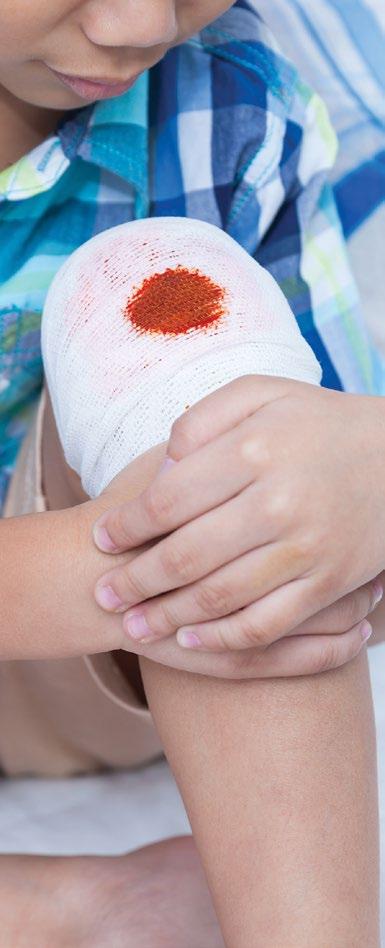
Pharmacist’s advice for treating minor open wounds
First, wash your hands well with soap and clean water.
Remove any jewellery or clothing from around the wound.
Apply pressure until the bleeding stops.
Clean the wound with antiseptic, or if this is not available, with a saline solution made from half a teaspoon of salt per cup of cooled boiled water.
Examine the wound for dirt or debris, remove it with clean forceps or tweezers, and clean again if needed.
Pat the wound dry with a clean cloth or sterile gauze.
Dress the wound by applying antibacterial ointment, covering it with gauze or an appropriately sized bandage, and securing it with adhesive tape.
Most minor wounds should be cleaned and dressed twice daily, or as directed by your doctor, or if the dressing becomes wet or soiled.
“Always see your doctor if a wound is deep and bleeding heavily, and check that your family’s tetanus vaccinations are up to date. If you see that the wound is not responding to home care within a few days or there are signs of infection, it would be best to consult your doctor.”
A wound is classified as either acute or chronic depending on how long it takes to heal. Acute wounds heal without complications within an expected timeframe, usually within a month to six weeks. Chronic wounds are those that take longer to heal, more often with some complications.
Types of wounds include those following an injury to the skin or underlying tissue or organs caused by surgery, a blow, a cut, a chemical burn, heat or cold, friction or shear force, pressure, or a health condition.
“For burn wounds specifically, hydrogen peroxide or alcohol should not be used as this could slow the healing process. Instead, wash gently with soap and water, gently pat the burnt area of the skin dry, and then apply a thin layer of petroleum jelly or antibiotic ointment,” Ebersohn advises.
Bedsores, pressure sores, or decubitus ulcers: these are chronic wounds caused by pressure or shearing force on the skin. They often affect people with limited mobility and those confined to bed for medical reasons or while recuperating from an operation.
Diabetic ulcers: these generally occur on the feet and result from changes to nerves and circulation caused by diabetes and are most common among older people with diabetes.
“Poor circulation and limited blood flow can affect the body’s ability to heal wounds, which may develop into diabetic ulcers. Many times, there is little to no feeling in the person’s feet due to diabetes-related nerve damage. It is essential to check for any signs of injury or infection daily because if a diabetic ulcer goes untreated it might, unfortunately, sometimes result in the need for amputation,” Ebersohn warns.
Medipost Pharmacy dispenses prescription and other non-prescription items,
including everything from chronic medication to wound care products and medicine cabinet essentials, delivered to any address in South Africa.
“Prevention is always better than treating a wound. Take precautions to avoid injury
and keep healthy, including being as active as possible, eating a balanced, wholesome diet, losing excess weight, and managing existing health conditions carefully in regular consultation with your treating healthcare professional,” Ebersohn concludes.
Pharmacist Carla Ebersohn of Medipost Pharmacy recommends stocking your medicine cabinet or first aid kit with the following:
sterile latex gloves; wound cleaner or antiseptic solution; hydrogen peroxide to help prevent infections in minor wounds, such as scrapes or small cuts; gauze swabs for cleaning wounds and sterile gauze for dressings; cotton wool for padding; scissors, forceps (also known as tweezers) for removing splinters; bandages of different sizes and safety pins for securing; a roll of elastic adhesive tape; first aid dressings; alcohol swabs; burn shield dressings; povidone-iodine broad-spectrum antiseptic cream for topical application; and antibacterial creams or ointments containing hydrocortisone and fusidic acid in combination for treating an infected wound.

“Check your home or office first aid kit to make sure you have these basic wound care items, available online at https://shop.medipost.co.za, and that the products are safely within the expiry dates to be prepared when a minor injury occurs,” Ebersohn says.
By Dr Clayton Mentoor, Innohealth Clinics
The side effects of medication can vary significantly depending on the age group, what type of medication and duration of usage. This article provides a general overview of common side effects for varying age groups and what one can do if they do appear.
Infancy (0-2 years)
Common side effects: What to do:
• baby being fussy or irritable;
• not wanting to feed as normal;
• difficulty falling and staying asleep as on previous occasions;
• formation of a rash anywhere on the body;
• drooling;
• swelling of the face (eyes/lips/ tongue);
• raised bodily temperature; and
• vomiting or diarrhoea.

• Consult a medical professional immediately if there is a suspected allergic reaction.
• Monitor symptoms and assess what could have possibly caused the presenting symptoms and how long after administration of medication the symptoms presented.
• Ensure proper hydration if continuous vomiting and diarrhoea is present.
• Make sure temperature is within the normal range and administer some sort of analgesia or anti-pyretic in cases of fever.
Common side effects: What to do:
• increased activity or drowsiness (sleepiness);
• nausea or vomiting;
• allergic reactions (rash, itching, swelling of eyes/ lips/ face/ tongue);
• drooling; and
• abdominal disturbances (constipation, diarrhoea).
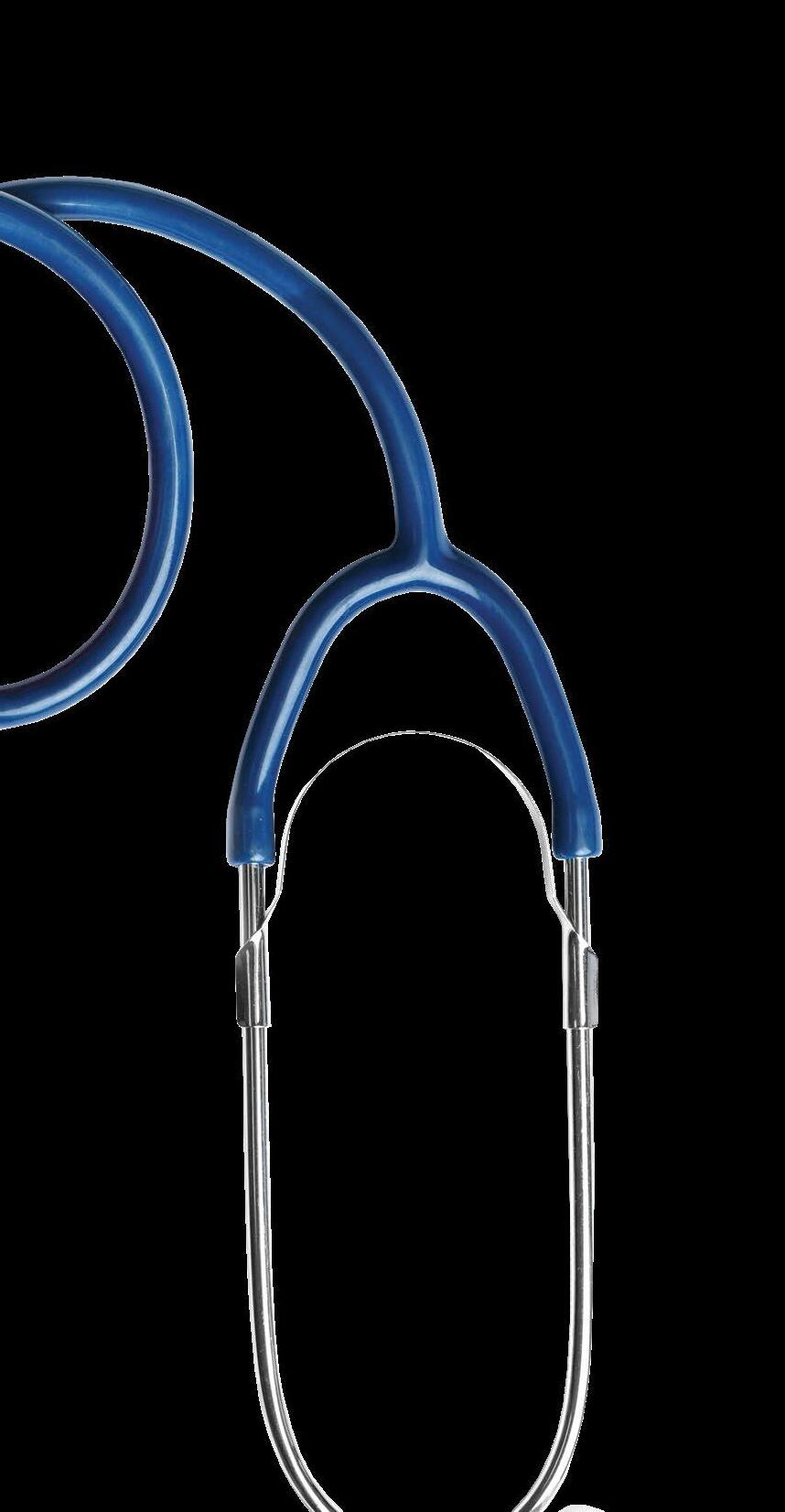
• Discuss any suspected side effects with a medical professional immediately.
• Monitor the child closely for any changes in their general behaviour.
• Maintain adequate hydration at all times.
• Adjust the timing of medication with meals if it helps reduce gastrointestinal issues.
• Anti-histamines can be given according to advice from a medical professional to help with certain symptoms, especially itching and swelling.
Common side effects: What to do:
• drowsiness or inability to sleep;
• mood swings or behavioural changes;
• gastrointestinal issues (nausea, vomiting, diarrhoea); and
• headaches and dizziness.
• Consult a healthcare provider to discuss any persistent or severe side effects.
• Encourage healthy lifestyle habits (balanced diet, regular exercise).
• Monitor mental health closely, particularly with medications that affect mood.
• Monitor symptoms, especially If new medication is being taken.
Common side effects: What to do:

drowsiness or insomnia; gastrointestinal issues (nausea, constipation, diarrhoea); dizziness or lightheadedness; allergic reactions (itching/ rash/ swelling anywhere on the body); and difficulty breathing.


• Regularly review medications with a healthcare provider to avoid possible interactions between different medications.
• Monitor for any changes in cognitive function or balance.
• Ensure proper hydration and diet.
• Use of aids such as pill dividers to manage complex medication schedules.
• Always follow the prescribed dosage and regimen.
• Read the medication's leaflet for specific side effects and instructions.
• Report any unusual or severe side effects to a healthcare professional immediately.
• Never stop taking a prescribed medication without consulting a healthcare provider.
• Each individual may react differently to medications, so it's essential to monitor and communicate any concerns to a healthcare provider promptly.
Libido, often referred to as sexual desire, is a fundamental aspect of human sexuality that varies widely among individuals and can be influenced by a multitude of factors. This article explores the concept of libido, its importance in relationships and overall well-being, and factors that can either enhance or diminish sexual desire.
By Dr Chanell Marthinussen, Innohealth Clinics
Libido can fluctuate throughout life due to various factors such as age, health status, hormonal changes, and psychological well-being. Puberty marks the beginning of sexual maturity. Libido increases significantly due to hormonal changes, particularly the rise in testosterone in males and oestrogen in females.
Libido peaks in young adulthood (late teens to twenties) when individuals are typically at their physical and reproductive prime. New relationships, exploration, and experimentation contribute to higher libido levels. In an older age group (20-40s), libido varies widely based on individual factors such as stress levels, relationship status, health, and lifestyle. Generally, it tends to stabilise but can still fluctuate significantly.
During a woman’s pregnancy and postpartum period, libido can fluctuate due to hormonal changes and physical discomfort. After childbirth, libido may be affected by factors such as breastfeeding, fatigue, and changes in body image.

After 40 years old, libido may decrease somewhat, mainly due to hormonal changes (e.g., menopause in women, andropause in men), stress, and relationship dynamics. Libido tends to decrease further in older age due to declining hormone levels, health issues, and changes in physical capability. However, libido can still vary widely among individuals.
Studies suggest that a significant proportion of the general population experiences some degree of decreased libido at various points in their lives. Estimates vary, but it’s reported that around 15-30% of individuals may experience reduced sexual desire at any given time.
A waning sex drive, also known as a decrease in libido, can be influenced by a variety of factors. Lifestyle factors such as high levels of stress, whether from work, finances, or personal life, can significantly reduce sexual desire. Fatigue, lack of sleep,
and physical exhaustion can also decrease libido. Conflict, unresolved issues, poor communication, and emotional distance between partners can all impact sexual desire. A lack of emotional intimacy can be particularly detrimental to libido.
Certain medical conditions can affect libido, including chronic illnesses, diabetes mellitus, hypertension, and neurological disorders. Medications used to treat these conditions can also have side effects that reduce sexual desire. Mental health issues such as depression, anxiety, and stress disorders can diminish libido. Body image concerns, low self-esteem, and a history of trauma or abuse can also negatively impact sexual desire. Excessive use of alcohol and certain drugs can impair sexual function and decrease libido. Poor diet, lack of exercise, and unhealthy habits such as smoking can contribute to reduced libido.

Conversely, maintaining a healthy lifestyle can support sexual health and libido. Routine or lack of novelty and excitement in the relationship can lead to a decrease in sexual desire. Sociocultural beliefs and values around sex and sexuality can influence libido. Guilt or shame related to sex, especially in specific cultural or religious contexts, can impact sexual desire.
While lowered libido is common, it’s important to note that it is not necessarily permanent or untreatable. Addressing the underlying causes, such as diagnosing medical conditions, reducing stress, improving communication in relationships, and seeking therapy or counselling when needed, can often help improve libido and overall sexual satisfaction.
Experiencing a dip in your sex life can be concerning, but there are many steps you can take to address and potentially overcome this issue.
Tips to help
Communicate with your partner: open and honest communication about your feelings, desires, and concerns is crucial. Discuss any changes in your libido and how they are impacting your relationship. Sharing your thoughts can strengthen emotional intimacy and help find solutions together.
Address underlying issues and educate yourself: identify any underlying factors contributing to the dip in your sex life. This could include stress, relationship problems, health issues, medications, or hormonal changes. Addressing these issues with the help of a healthcare provider, counsellor, or therapist can be beneficial.
Explore new things and prioritise intimacy: trying new activities or experiences together can reignite excitement and passion. This could include trying new hobbies, going on adventures, or exploring different ways to be intimate. Intimacy is not just about sex but also about emotional closeness and connection.
Take care of yourself first: physical and mental well-being plays a significant role in libido. Eat a balanced diet, exercise regularly, get enough sleep, and manage stress effectively. Taking care of yourself can improve overall energy levels and mood, positively impacting your sex life. Convince your partner to care for themselves, mentally and physically (males often need some convincing).
Create a positive environment: make your bedroom a comfortable and inviting space for intimacy. Reduce distractions, create a relaxing atmosphere, and prioritise privacy and time alone.
Remember, every relationship and individual is unique, so it may take some experimentation and effort to find what works best for you and your partner. Be open to trying new approaches and adjust expectations as needed to improve your sexual satisfaction and overall relationship quality. Be patient with yourself and your partner as you work through these changes together.

Medication to improve libido
Seek professional help: if the dip in your sex life persists despite efforts to address it, consider seeking guidance from a therapist or counsellor who specialises in sexual health or relationship issues. They can provide personalised strategies and support. 1 2 3 4 5 6
Medication to improve libido is typically considered when there is an underlying medical condition that directly affects sexual desire or when hormonal imbalances are identified as the cause of decreased libido.
Medication might be necessary to improve libido when there are:
• Hormonal imbalances: if blood tests reveal low levels of testosterone in men or oestrogen in women, hormone replacement therapy (HRT) may be recommended. Hormone therapy may be recommended for women experiencing symptoms of menopause (such as hot flashes, vaginal dryness) or for men experiencing symptoms of andropause (such as fatigue, decreased muscle mass). These therapies can sometimes improve libido as well.
• Certain medical conditions or psychiatric conditions requiring treatment may/ may not have side effects affecting libido.
• Erectile dysfunction diagnosis: in men, difficulty achieving or maintaining an erection (erectile dysfunction) can lead to decreased sexual desire. Medications may be prescribed to improve erectile function, which in turn can help restore libido.
• There are some medications specifically designed to enhance libido or sexual desire in females; these would require a consultation with healthcare providers.
It’s essential for individuals experiencing a decrease in libido to discuss concerns with a healthcare provider to determine the appropriate holistic course of action.


Beta-gel lubricant has been formulated to conform to the body’s own natural lubrication.
Convenient
Beta-gel comes in a convenient 200ml bottle with pump.
Efficient
The cost of Beta-gel has been structured to give users value for money.
Reliable
Provides a constant lubrication that is similar to the body’s own natural lubrication and has a pH of 4.7

By Affinity Health


“Stress is a common part of life, affecting about 71% of South Africans, according to a survey conducted by Ipsos in 2023,” says Murray Hewlett, CEO of Affinity Health. “While some eat more when stressed, others find their appetite decreases, especially when suffering from chronic stress. This can cause problems such as weight loss, nutritional deficiencies, digestive issues, weakened immune function, fatigue and hormonal imbalances.”
Understanding the link between stress and appetite
Stress triggers the hypothalamic-pituitaryadrenal (HPA) axis, which produces stress hormones, including cortisol and adrenaline. Thanks to these hormones, the body prepares for a “fight-or-
flight” reaction. Adrenaline temporarily suppresses appetite as the body focuses on immediate survival rather than eating.
Cortisol, the primary stress hormone, has a more complex role. While cortisol can increase appetite in some individuals, it can also suppress it in others, especially in the short term. Chronic stress may cause cortisol levels to stay high, which can interfere with natural hunger signals and decrease the urge to eat.
Psychological factors
Stress can also impact appetite through psychological pathways. Anxiety and worry brought on by stress can overshadow feelings of hunger. Stress can also impact sleep patterns, leading to insomnia or poor-quality sleep. This lack of rest further disrupts the balance of
hunger-related hormones, such as ghrelin and leptin, which can suppress appetite.
Stress can also impact appetite through psychological pathways.
Physical factors
Stress can lead to physical symptoms that make eating or feeling hungry difficult. These symptoms can range from mild discomfort to severe digestive issues, including nausea, stomach pain, bloating, heartburn and acid reflux, dry mouth, and difficulty swallowing.
Diaphragmatic breathing is an easy but effective way to reduce stress and promote relaxation. It activates the parasympathetic nervous system, helping shift your body from “fight-or-flight” to a “rest-and-digest” state. This shift calms your mind and improves your digestive system’s function. Taking deep, controlled breaths help your body relax, making eating and digesting food easier during stressful times.
Steps to practising diaphragmatic breathing:
• Find a comfortable position: sit or lie down in a comfortable position. Ensure you are in a quiet environment where you can relax without interruptions.
• Place your hands: place one hand on your stomach below your ribs and the other on your chest. This positioning helps you monitor your breathing, ensuring you use your diaphragm rather than your chest.
• Inhale deeply: breathe slowly and deeply through your nose. As you inhale, focus on expanding your abdomen, allowing your belly to rise and push your hand out. Make sure your chest remains still.
• Exhale fully: exhale slowly through pursed lips as if you are whistling. Feel your belly fall as the air is pushed out. Again, your chest should remain relatively still.
• Maintain a steady rhythm: continue this pattern of deep inhalations and slow exhalations. Aim to practice this for about five minutes.
Breathe slowly and deeply through your nose. As you inhale, focus on expanding your abdomen, allowing your belly to rise and push your hand out. Make sure your chest remains still.
Place one hand on your stomach below your ribs and the other on your chest.
Avoid multitasking while eating
Multitasking while eating, such as working on your computer, scrolling through your phone, or watching TV, can increase stress and anxiety levels. Dedicating time solely to eating gives your mind a much-needed break from these stressors. Creating a routine where you set aside time for undistracted eating can lead to more consistent eating habits.
When you eat regularly, your body becomes accustomed to these patterns, and you start to feel hungry at the exact times each day. Paying full attention to your meal improves digestion. When you’re not distracted, you chew your food thoroughly, which is the first step in proper digestion.
Chewing breaks food into smaller pieces and mixes it with saliva, which contains enzymes that start digestion. Thorough chewing can prevent common digestive issues like bloating and indigestion, often aggravated by stress.
Stock up on easy-to-prepare foods
During stressful times, you may not feel like eating or cooking. Keep convenient and simple foods on hand for these moments. Here are some meal ideas you can enjoy:
• Smoothies: blend fruits, vegetables, protein powder, and healthy fats like nut butter for a nutrient-packed meal that’s easy to consume. Smoothies are an excellent way to consume essential nutrients without much effort.
• Salads with protein: make a hearty salad with various colourful veggies, a source of protein (like chicken, tofu, or beans), and a healthy fat (like avocado or nuts). Salads provide a balance of fibre, protein, and healthy fats.
• Oatmeal: a warm bowl of oatmeal with added fruits, nuts, and seeds can be comforting and nutritious. Oatmeal contains beta-glucan, which helps manage cholesterol and boosts immunity.
• Soups and stews: these meals can be easy to digest and packed with vegetables, proteins, and healthy fats. They also help keep you hydrated and are comforting during stressful times.
When stress regularly affects your appetite
If stress frequently kills your appetite, it’s essential to consult with your doctor. They can check for an anxiety disorder or other medical condition like gastroparesis, which affects the stomach’s ability to empty food into the small intestine. A therapist can also provide you with healthier tools for coping with stress.
Exhale slowly through pursed lips as if you are whistling. Feel your belly fall as the air is pushed out. Again, your chest should remain relatively still.
It’s important to recognise the signs of stress affecting your eating habits and take proactive steps to address it. You can nourish your body and manage stress more effectively by focusing on your meals and employing healthy coping mechanisms like diaphragmatic breathing.

AFRICAN EXTRACTS ROOIBOS
This all-in-one cleansing micellar water has micelles that attract and gently remove surface impurities and makeup without harsh rubbing or rinsing. With antioxidant BioActive Rooibos and soothing aloe extract.
www.africanextracts.com

HAPPY EVENT
Happy Event skincare that has been trusted by Moms for more than 50 years, has now launched a 100% natural body oil. This powerful blend of olive, argan, marula, baobab and oat oils helps tackle scars and stretchmarks, uneven skin tone and dry skin. It is naturally fragranced with lavender essential oil, so contains no artificial fragrances, and the bottle and carton are made from recycled materials and are recyclable. Available in Dis-Chem and Clicks

Atoderm Intensive Gel Moussant (500ml) – soft purifying cleansing gel that soothes sensations of discomfort and irritation. Protects from cutaneous dryness. Respects the skin balance thanks to the super-fatting cleansing base.
Atoderm Preventive – nourishing dermo-consolidating cream that slows down the aggravation of skin dryness from birth.
Atoderm Intensive Gel-Creme – deeply nourishes, protects, and repairs the skin. Great for the daily care of very dry, irritated, and atopic skin.

Comprising Atoderm Intensive Gel Moussant, Atoderm Preventive, Atoderm Intensive Gel-Creme, Cicabio Creme + and Photoderm Pediatrics Lait valued at R2 010! Bioderma hamper

To enter scan the QR code with your phone and complete the entry form online at www.babysandbeyond.co.za/ competitions/
Closing date: 30 November 2024. T&Cs apply.
Cicabio Creme + – a soothing, repair cream ideal for irritated and damaged skin. Its antibacterial agents purify the epidermis and relieve the feeling of discomfort and reduces the urge to scratch.
Photoderm Pediatrics Lait – the anti-UVA filter system and antiUVB of Photoderm Pediatrics Lait spf50+ safely protects the delicate skin of children.
www.bioderma.co.za






Centar® is a new brand of product from Lamelle that consists of Centar® Lotion and Centar® Gel.
These products are indicated for:
• The prevention of and the improvement in the appearance of striae distensae associated with pregnancy.
• The improvement in the appearance of early scars.
CeNtar® LotioN
In addition the Ultra-Distillate Centella Asiatica (UDCA), the lotion contains stabilised Copper Tri-peptide and purified Avena Sativa extract. The level of these actives have been chosen for optimal prevention of striae development as well as the ideal conditioning of stressed skin.
CeNtar® GeL
Is indicated for newly forming striae or persistently red scars that require more aggressive modulation. This is the super-concentrate powerhouse Centar® offering that has 6 dedicated anti-scar actives. In addition to the UDCA, Copper Tri-peptide and Avena Sativa extract, the Centar® Gel also includes Dex-panthenol, the extremolyte, Ectoin, and a new HAFI fragment polymer.
From trauma to cosmetic surgery, trust Centar® to heal skin, renew confidence, and inspire hope.



Fundamentals Skincare’s Natasha Davel explains that: “Glycolic acid is a water-soluble alpha hydroxy acid (AHA) made from sugar cane. It is one of the most widely used AHAs in skin care products. AHAs are natural acids that come from plants.”
Glycolic acid has the smallest-sized molecules of all the AHAs. This allows it to absorb into the skin and exfoliate it even better than other AHAs. This form of AHA works by speeding up cell turnover. It dissolves the bonds that hold skin cells together. In effect, your skin is able to shed dead skin cells more quickly than it would on its own. It triggers your skin to make more collagen as well. Collagen is the protein that makes skin firm, plump, and elastic. It also gives your bones and connective tissues their strength.
“We all know by now that your skin makes less collagen as you age. Collagen is also destroyed when you spend too much time in the sun. Using glycolic acid each day can help prevent the breakdown of collagen,” adds Davel.
Known for its exfoliating and skin renewing properties, this ingredient is a musthave in skincare.
01 Anti-ageing it smooths fine wrinkles and improves the skin's tone and texture.
02 Hydration it plumps the skin and prevents it from getting dry.
03 Sun damage and hyperpigmentation it fades dark patches caused by sun damage and protects collagen from the sun.
04 Complexion it brightens the skin when used regularly.
05 Exfoliation it prevents ingrown hairs and makes pores appear smaller by helping the skin shed dead skin cells.
06 Acne it cleans out pores to prevent comedones, blackheads, and inflamed breakouts.
Always apply your sunscreen: like all AHAs, glycolic acid can make your skin more sensitive to the sun.
Allow your skin to get used to glycolic acid: start by applying it just three times per week for a week or so. If your skin isn't red or irritated, try using it four times a week for a week or two. Keep slowly building up use this way until you're able to use it every day. If at any point your skin becomes irritated, give your skin a rest before trying again.
Accept the process: your skin may feel a bit rough after your first few treatments. This is normal and just means that the glycolic acid is working. Unless your skin is irritated, keep using your glycolic acid product. You should slowly start to see smoother, healthier skin.
*Fundamentals Skincare has released a new 5% Glycolic Acid.


Affinity Health, a leading provider of high-quality health coverage, explores five ways to manage and treat post-birth control acne.
“According to the National Institutes of Health, inflammatory and non-inflammatory acne can improve in women who use contraceptive pills as birth control,” says Murray Hewlett, CEO of Affinity Health.
“However, when you stop taking birth control, your hormones may fluctuate, and acne can return or even worsen.”
Here are five ways to tackle acne after stopping birth control:
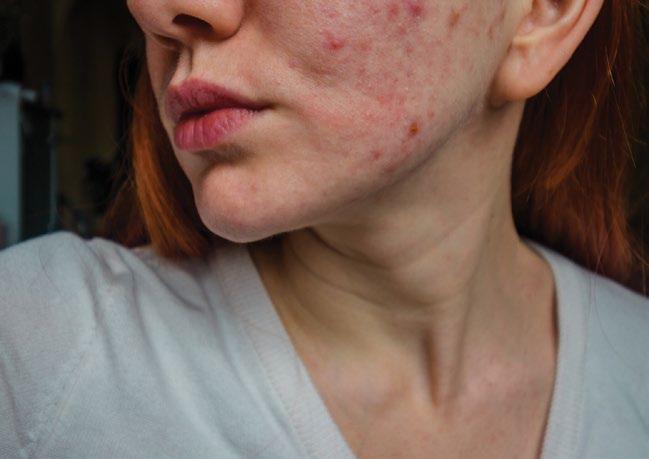
1
Maintain a Consistent Skincare Routine
2
A solid skincare routine is vital for managing acne, especially during hormonal changes. Using the right products consistently can help keep your skin clear.
Steps for an effective skincare routine
• Cleanse gently: use a gentle cleanser twice daily to remove dirt, oil, and makeup without drying your skin.
• Read ingredients: look for facial products with salicylic acid or benzoyl peroxide to help fight acne.
• Exfoliate regularly: exfoliate two or three times a week to remove dead skin cells and prevent clogged pores.
• Moisturise daily: if your skin is oily, apply a noncomedogenic moisturiser to keep it hydrated.
• Spot treatments: target specific breakouts using spot treatments with benzoyl peroxide or salicylic acid.
• Sun protection: always apply sunscreen during the day. Many acne treatments can make your skin more sensitive to the sun, so protection is essential.
The first step in managing post-birth control acne is understanding the role of hormones in skin health. Hormones like oestrogen and progesterone, included in birth control pills, may help lower skin sebum (oil) production. When you stop taking these hormones, your body needs time to readjust, which can increase sebum production and subsequent acne breakouts.
How to manage hormonal fluctuations
Give it time: understand that your body might take a few months to stabilise after stopping birth control. Be patient and give your skin some time to adjust.
Consult a doctor: consult a healthcare provider if you have severe hormonal imbalances.
Monitor your cycle: tracking your menstrual cycle can help you see patterns and predict when breakouts might happen so you can prevent them.

Adopt a healthy diet
Diet plays a significant role in your skin health, that’s why you should consider:
3
• reducing your intake of dairy and high-glycemic foods, such as sugary items and refined carbs;
• increasing your consumption of antioxidant foods like fruits, vegetables, nuts, and seeds;
• including healthy fats in your diet, such as omega-3 fatty acids (found in salmon), monounsaturated fats (found in avocados) and polyunsaturated fats (found in walnuts); and
• staying hydrated by drinking plenty of water.
Manage stress and get adequate sleep
Stress and insufficient sleep can aggravate acne. Stress causes your body to produce more cortisol, which increases oil production in your skin and can result in blocked pores and acne. Techniques such as meditation, yoga, and deep-breathing exercises can help manage stress levels.
5
4
Consider more potent topical treatments or prescription medications if over-thecounter products aren’t enough. These can effectively target acne at its source.
Retinoids: retinoids can help prevent clogged pores and promote cell turnover. They are available in prescription and over-the-counter formulations.
Antibiotics: topical antibiotics prescribed by a doctor or dermatologist can reduce inflammation and kill acnecausing bacteria.
Azelaic Acid: this natural acid can reduce inflammation, kill bacteria, and reduce keratin production, which can help prevent clogged pores.
Oral medications
Antibiotics: oral antibiotics can help reduce inflammation and bacterial growth. They are typically used for a short duration to avoid antibiotic resistance.
Hormonal therapy: medications like spironolactone can help balance hormones and reduce acne.
Lack of sleep can raise cortisol levels and disrupt other hormones, leading to more inflammation and breakouts. Sleep is when your body repairs itself, including your skin. Adequate rest ensures your skin has time to heal and regenerate. Try to get 7-9 hours of sleep each night.
Acne after stopping birth control can be frustrating, but with the right approach, it’s manageable. Understanding the role of hormones, maintaining a consistent skincare routine, adopting a healthy diet, considering topical treatments and medications, and managing stress and sleep can all contribute to clearer skin. If your acne persists or worsens, consult a dermatologist for personalised advice and treatment options.

Some children are born with a few primary teeth; in others, these teeth may erupt between 6-9 months of age. Teething can certainly be uncomfortable for your baby, but an excellent teething ring can do the trick in most cases! Sometimes, teething may be accompanied by fever spikes, manageable with your paediatrician’s help.
Pacifiers are great to use to help relax your child, however, they can interfere with the development and positioning of the teeth, so it’s best to use them sparingly and always seek the advice of your dentist or oral hygienist in this regard. Prolonged use of pacifiers, like a child sucking their thumb long after their permanent teeth have erupted, can cause serious orthodontic issues.
Taking care of your child’s milk teeth is as essential as caring for their permanent teeth. Decay on primary teeth can affect the permanent teeth that are erupting, and losing teeth early can cause the permanent teeth to erupt in the incorrect position or prevent them from being able to erupt at all, leading to extensive orthodontic treatment when your child is older.
The trauma of the pain, as well as the placing of dental fillings and possible extractions, can also create unnecessary
Early action is best when it comes to ensuring healthy teeth in the long term.
By Emma King, Independent Oral Hygienist and General Manager at Baltimore
stress for your child. Whilst most dentists offer virtually pain-free procedures, the dental chair isn’t anyone’s favourite place to be.
As dental professionals, we try to change any negative ideas around visiting us by getting your child in to see us from the moment they have teeth. Riding up and down in the chair and simply placing a mirror in their mouths to check development is a great way to get them used to the fact that we dentists and oral hygienists are real-life tooth fairies who want to help you look after your teeth as best you can.
It’s essential to limit processed foods and carbonated sodas early on to reduce the chance of decay from the high sugar content, which encourages the growth of the harmful bacteria that attack the tooth.
Take control of your child’s brushing and oral health from day one. Before they have teeth, you can use sterile gauze to wipe over the gums, and as the teeth start erupting, you can use age-specific brushes. Make sure you clean the teeth in the morning and evening, and once the teeth have erupted fully, brush them in small circular motions to cover both the teeth and the gums. You can always give your child a brush to copy you, but
make sure your brushing techniques are thorough and you reach all the teeth twice a day on your own. Brush the top teeth first in the morning and the bottom teeth first at night. That way, if they start to perform, you know at least all the teeth got correctly brushed once a day!
Selecting a toothpaste and brush
It is essential to select a toothpaste that limits the fluoride content as children swallow it until at least six years old. After that, the fluoride content can increase as they get older. Fluoride is necessary to prevent decay and strengthen teeth, but too much fluoride can cause unsightly white spots on the teeth and even pitting of the enamel surface. A quarter of a pea-sized blob of toothpaste is all you need to clean the teeth at this stage.
Many toothbrushes are fun and colourful, which helps as they get a little older by encouraging them to brush their teeth. As they get to 5 or 6 years old, you can start letting them take over the brushing and reward them with a chart with stickers, fun 2-minute timers whilst brushing or other exciting ways to encourage them to brush twice daily. You still need to oversee the process, but if they have a toothbrush that’s easy to hold and fun to use, that always helps!
Your child should be able to brush unsupervised at 8-9 but may still need encouragement. If they notice you hop into bed without brushing, that will soon be their habit, too, so always lead by example.
Flossing is not the most popular health chore for most adults, so children also need a bit of motivation and education as to why it’s so important. When your child’s permanent teeth erupt at around 5-6 years of age, you should start flossing between them to help prevent decay. Kids don’t have the dexterity to wrap the floss around their fingers until they are a little older, so you must do this for them.
Parents can use rechargeable water flossers on their kids’ teeth as well as their own! This is much easier than flossing and helps to keep the gums healthy.
As with certain toothpastes, I would only recommend mouthwash for a child once they can control their swallowing. The mouthwash you choose must be alcohol-free, not just because you don’t want your child to have alcohol, but because it also dehydrates the mouth and reduces the natural cleansing. At night, we sleep with our mouth open, and the mouth dries out anyway; an alcoholcontaining mouthwash just makes this much worse and dehydrates the mouth even further, increasing the chance of decay.
My best buys for oral care for both yourself and your child are:
Philips Sonicare electric toothbrushes are available in a wide range and have various heads of various sizes with multiple-strength bristles. They all have 30-second quadrant timers and a 2-minute overall brushing timer. Many have brush head replacement reminders that let you know if you are brushing too hard.
The Waterpik Rechargeable water flosser’s ergonomic handles make it easy for all ages and adults to use on their children. The tips are also easy to change and replace, and you are guaranteed to see a massive change in oral health in under two weeks.
The O7 range of mouthwash is not only alcohol-free but works using oxygen therapy by attacking the bacteria that cause decay and gum disease and leaving the good bacteria behind to do its work. It doesn’t dehydrate your mouth or affect your tastebuds, which happens when using many antibacterial agents.
Curaprox has a great range of teeth rings and pacifiers to help you and your baby get through the teething stage.
When it comes to our children, their health and happiness is our number one priority. Not enough parents pay close attention to children’s oral health. For most children, proper dental care starts with the right toothpaste.
Here is a helpful explanation of why Aquafresh products are perfectly formulated for specific ages:
Age 0-2 years
Aquafresh Milk Teeth toothpaste: gentle care for tiny teeth
The first tooth is a milestone, and it signals the beginning of a lifelong oral care routine. Aquafresh Milk Teeth toothpaste is designed for babies' first teeth, providing gentle yet effective cleaning.
Age 3-5 years
Aquafresh Little Teeth toothpaste: strong defence for growing smiles
Milk teeth, with enamel up to 50% thinner than that of adult teeth, need extra protection. Aquafresh Little Teeth toothpaste is specially formulated with cavity-fighting fluoride to strengthen young teeth and protect them from sugar acid attacks.
Age 6-8 years
Aquafresh Big Teeth toothpaste: protection for emerging adult teeth
As your child’s milk teeth start to make way for permanent teeth, their dental care needs evolve. Aquafresh Big Teeth toothpaste is designed to protect both emerging adult teeth and any remaining milk teeth. The enamel on new adult teeth can take up to three years to reach full strength, so this toothpaste’s unique formula helps protect and strengthen them during this critical period.

Adolescence is a transitional period – it heralds the transition from childhood to adulthood. It is also a highly challenging time, precisely because it straddles these two life stages.
“Thinking of adolescence, one can imagine someone balancing with their feet in two separate canoes on unsteady waters,” says Clinical Psychologist Ruvé Esterhuysen. “One canoe represents childhood, the other adulthood, as the person navigates the sometimes stormy waters of life.
“For adolescents, this phase of their lives can feel like they have a foot in two worlds without fully belonging to either,” says Esterhuysen. “Practically, it can be a time of significant mental health challenges.”
Data from UNICEF South Africa1 indicates that 60% of youth felt that they needed mental health support in 2022/2023. Meanwhile, Life Healthcare reports2 that suicide risk is a top driver of high-risk case management for the teenage age group.
“All of these developmental tasks must be achieved while navigating those unsteady waters of life,” says Esterhuysen. “Destabilising crosscurrents occur thanks to the hormones accompanying puberty: peer pressure, social media, academic pressure, family relationships, friendships, romantic relationships and many other complexities.”
These complexities mean that adolescence is also a time of serious behavioural risks. These include increased risk of drug use, violence, and high-risk sexual behaviour.
This makes it incredibly important for adolescents to know that they have
For adolescents, these stress factors come amidst a range of psychological tasks that must be accomplished as they mature. They must:
• develop their own identity;
• nurture a sense of belonging to various groups;
• form meaningful relationships; and
• become more independent.
support – from mentors, educators, parents and guardians, as well as healthcare professionals.
Parents can support adolescents by setting boundaries. If the adolescent is exploring more impulsive, risky or unsafe behaviours, then firmer boundaries may need to be set. If the adolescent is acting responsibly and independently, parents can consider giving them more freedom within reasonable bounds.
The key, says Esterhuysen, is helping young people to find balance in their lives. A basic element of this is self-care. She offers the following self-care tips for adolescents.

Take good care of your physical health (sleep, nutrition, exercise, hygiene). 1

2
Set healthy boundaries in relationships – know when to say NO.
7
Find a healthy balance between all aspects of life –schoolwork, friends, family, rest, etc.

6
Ask for help if you’re struggling.
5
Practise healthy boundaries with your phone and social media.
If an adolescent is in difficulty but does not feel comfortable sharing with their parents, it is a good idea to seek professional help from a psychologist or psychiatrist. Parents can teach their teens that asking for help is a sign of strength.
Professional mental health support is available from Life Mental Health3, a leading provider of private psychiatric services in South Africa, offering acute mental healthcare with a 498-bed capacity in a caring environment at nine facilities
3
Take good care of your mental health (music, hobbies, talking to someone who can support you, attending therapy).
4
Follow a daily routine.

in Gauteng, the Eastern Cape, KwaZuluNatal and the Western Cape.
Multidisciplinary teams offer treatment for optimal outcomes through the short-term treatment of mental illness and disorder.
If you recognise signs of depression or mental illness in an adolescent person close to you, or you have a loved one who might need psychiatric help, visit Life Mental Health for an admission guide, emergency advice and other resources.
Adolescence is an exciting time of life, but it’s not always easy. Fortunately, there is help available, through professionals and loved ones, to help achieve the fascinating balance that makes life so rewarding.
References:
1. https://www.safmh.org/explainer-series-self-harm
2. https://www.lifehealthcare.co.za/news-and-infohub/latest-news/spotting-the-red-flags for-teenmental-health/
3. https://www.lifehealthcare.co.za/patientinformation/patient-services/complementaryservices/life-mental-health/
Digital learning has brought hope to young people across the planet, offering an opportunity to grow their skill set, expand their horizons, and gain qualifications in a practical, efficient way. Telkom Learn has some advice for parents on how they can support their children on their remote-learning journey.
Provide input on which courses may be the best choice for your child. The economy and career paths are changing rapidly, and a wide range of skills is now invaluable in the workplace. Following courses in these new-generation fields could boost your child’s career prospects. The most valuable skills in the modern workplace include Project Management, Cybersecurity, Network Engineering, Data Analytics, Enterprise Architecture, Cloud Integration and Automation.


Much like physical classroom education, digital education requires a dedicated environment. Choose a space in your home or working environment to be permanently allocated to study. Customise it with a comfortable seat, a stable work surface and good lighting. Ensure it is quiet and out of the way of other household activities. Ideally, it should always be available and not be a multipurpose area that has to be converted every time you use it. The person using the space should add some personal touches.
Support your child in building a regular, steady study routine. Like many things in life, creating a good rhythm in our practice allows for consistent sustainability over the long term without it becoming tiring. Depending on your child’s other commitments, please help them allocate daily time to their online studies. Then, the study period becomes a commitment your child must adhere to – not something they must squeeze in between other responsibilities. Education is essential, and it deserves to be prioritised.
When your son or daughter is working, ensure they are not distracted. You can do your bit by keeping noise to a minimum, turning down the volume on your TV or your music, and explaining to visitors that your child is unavailable as they are studying. Offer to keep their phone so they’re not tempted by social media or texts from their friends.
The most effective digital training courses are those that are interactive and which ensure constant engagement from students. Look for classes that include built-in user evaluation. Some courses, such as the Alibaba Cloud ACA Business User Certification Exam Preparation Course, are available on Telkom Learn. They are explicitly geared to preparing your son or daughter for their certification exam. The collaboration with Telkom and Lightbulb Edtech also brings a transformative online learning platform to high school learners across South Africa. Lightbulb is an advanced learning portal explicitly tailored for high school learners. The platform covers many subjects, including English, Afrikaans, Mathematics, Natural Science, Physical Science, Geography, History, and Accounting, ensuring
Balance
Try to help the student in your life to find a healthy balance between screen time and the real world. Encourage your child to come for a short walk or to accompany you on an errand so they get a break from the glare of their laptop screen. It’s about mental relaxation as much as physical exercise. If you get the balance right, your child will be in a suitable space to get the most out of their online studies.
Aside from the practical considerations, it’s important simply to be there for your child when it comes to digital learning. They have no classmates nearby, so it will be helpful for them to have someone to bounce ideas off or to explain things to as they get to grips with their course. Simply asking, “So how’s it going?” every couple of hours will give them a chance to provide a short update and to articulate some of their learnings. It’s good for them to know that you’re on their team.

In digital education, collaboration is critical to innovation and success. Telkom Learn is at the forefront of this movement, forging strategic partnerships with leading educational providers to deliver rich and diverse learning experiences. The platform offers a wide range of subjects across various disciplines. Interactive lessons make learning a dynamic and immersive experience, with a virtual classroom feature that facilitates real-time interaction between students and teachers.
With the right support system, your child can get the most out of their online learning and emerge successful with the critical, in-demand skills they need to be readily employable and ready to impact the world around them.
The absence of fathers in South Africa is one of the critical epidemics of our time. The number of children growing up without a biological father in their lives is among the highest in the world and has severe and far-reaching ramifications. Without present, engaged and supportive fathers, rates of substance abuse, mental health conditions, teenage pregnancies and gender-based violence soar. The social fabric of families and communities begins to unravel.
By George Mwaura, Director of the non-profit organisation Isiseko Imara and a Heartlines Fathers Matter Ambassador
You don’t necessarily need to be a biological father to play a fathering role and provide the benefits that fathering affords. Social fathers are increasingly stepping into the gaps left by absent biological fathers, giving children and teenagers the guidance and encouragement they need to thrive and succeed.
Through the organisation I run, Isiseko Imara, I’ve worked as a sports coach and social father to children, especially boys, in seven communities in KwaZulu-Natal for the last 14 years. The experience has been nothing short of transformational.
What social fathering means to me
Social fathering goes beyond mentoring. It’s about intentionally and consistently choosing to play a fathering role in a child’s life. To be physically present and emotionally supportive. I want to be curious about their interests and invested in their well-being. To show up for things

that are important to them. To listen to them, challenge them, and help them know themselves.
Many young boys I work with are growing up with single mothers or grandmothers. They have very few men or male role models in their lives. Often, the men who do exist demonstrate toxic and destructive behaviours that the boys run the risk of learning from, imitating and repeating. As a social father, my responsibility is to dismantle these trajectories, to provide safety and security, and to give them direction.
I know some men prey on children – and that is something we condemn without reservation. As social fathers and men in this country, we are responsible for protecting children and for keeping them away from abusers.
In 2010, I facilitated our first Boys 2 Men camp, where we educated young boys on the journey into manhood. Of that group, 75% didn’t have fathers. It was at Boys 2 Men that I met Thando Mzimande, who was just ten years old at the time. Thando went on to join my basketball team, and we started to get to know each other, not just as basketball players but as friends and, over time, as father and son. Thando taught me how hungry boys are for father figures in their lives and what a positive impact playing this role can have.
“George was there for me physically and emotionally,” Thando says. “He paid attention to the clothes I was wearing and my situation at home. He saw how angry I was because I didn’t have a father. And he supported me and cared for me, so much so that he prevented me from falling into dangerous situations, like getting into drugs or dropping out of school.”
Today, Thando is a confident young man. He’s started his basketball programme, recruiting coaches and engaging with 60 young people. He’s paying his experience forward, and we remain close friends.

I know that I share my approach with other social fathers. Nkosinathi Sixabayi, the Western Cape Lead of Fathers Matter, is both a biological and social father, and he had several social fathers growing up. “Those who invested in my life provided guidance and helped me become the best I could be,” Nkosinathi explains.
Today, Nkosinathi has committed himself to investing in other children, not his own, because it was modelled for him. “Many call me their father because of the love and care I give to them,” he continues. “Social fathers can make a difference in children’s lives and have a role to play in helping to address and prevent gender-based violence.”
If your contribution as a social father will be meaningful and effective, it must be a conscious and deliberate act. And it must be consistent. Be reliable, and don’t
create expectations you can’t meet. The children you are likely to work with have had adults – especially men – let them down so profoundly that their trust is fragile. You have a responsibility to keep your promises.
That said, young people aren’t looking for perfect father figures. You simply have to be available, honest, and interested in getting to know them. If you have the opportunity to guide, support and raise a child, do so gently, lovingly, consistently and patiently. The benefits for them, you, and South Africa’s families and communities are beyond what you can imagine.
If you’re looking for support and tips on being a good father or social father, contact Heartlines’ Fathers Matter WhatsApp Coach. Simply WhatsApp “Hi” to 060 058 2107 and get access to a range of tips and advice.
Heartlines is a social and behaviour change organisation encouraging people to live out positive values. Heartlines does this through its projects, including films and multimedia resources that aim to spark conversations around values and equip people to live out them. Heartlines further facilitates values-based training, workshops and motivational talks for companies, organisations and groups.
Fathers Matter is a Heartlines initiative to promote fathers' positive and active presence in children’s lives. At the centre of the project are the Heartlines Fathers Matter Films – six anthology films set in various contexts around South Africa. Each short film is a compelling drama that explores the complexities of fatherhood in South Africa today, where most children grow up in homes without their biological fathers. www.heartlines.org.za/fathers-matter/home
By NSPCA
There is nothing more special than the love between a child and their pet. Who hasn’t “oohed and aahed” over those cute Instagram posts of a toddler with her arms wrapped tightly around the family’s Golden Retriever? Chances are that you have your own wonderful memories of growing up with a bouncy pup or cuddly cat. Sharing one’s life with a pet is one of the most rewarding experiences there is.
There are many benefits to growing up with a pet. Pets provide unconditional love and companionship, and caring for them can teach a child empathy and compassion. Pets can also encourage a more active lifestyle, as they need regular walks, grooming, and enrichment. Providing for a pet can teach children about responsibility and routine, as they are required to feed, clean, and care for their animal friend.

Your child has been pestering you for months to get them a furry friend. Is this the right decision for you?
• Do you have the time to care for your new pet? Remember that puppies (and even adult dogs) need a lot of attention and care. A child will only be able to do so much, which means that most of the responsibility will inevitably fall on you.
• Is your lifestyle and that of your kids conducive to a new pet? A cat would be more suitable than a dog if you live in a smaller home or an apartment. A busy dog is great if you have an active lifestyle.
• Are you prepared for your new pet to act like an animal? Cats and dogs have natural behaviours that they need to express for their well-being. Dogs will chew, bark, dig, and sniff. Cats will mark, roam, and hunt.
• Exotic animals are not suitable as pets. Animals like snakes, chameleons, bearded dragons, hamsters, terrapins, fish, chinchillas, hedgehogs, ring-neck parakeets, African grey parrots, or guinea pigs are not suitable as domestic pets. The NSPCA is opposed to the keeping of exotic animals as pets, as we cannot mimic the environment in which these animals thrive, and confining them compromises their welfare and well-being.
• Pets are not gifts. It is not fair to any animal or your children to spontaneously get a new pet as a birthday or Christmas gift. Looking after an animal takes up a lot of time and money, and is a lifelong commitment.
Before introducing a new pet into your family, prepare your kids for what to expect. Set up a list of “pet rules” for your home, to ensure the safety and comfort of both your kids and your new pet:
1 2 3 4 5 6 7 8
If possible, give items of worn clothes to your pet before bringing them home. They will become familiar with your smells, which can make the transition into a new home easier for them.
Encourage your child to put their toys away after they’ve played to prevent your pets from getting hold of them.
Get your kids into the habit of managing their belongings and food –the golden rule is “if your pet can reach it, they can have it”.
Teach your kids which human food is not suitable for pets. Remember, food like chocolate, certain nuts, and grapes are not good for dogs or cats.
Instil in your kids a sense of respect for your new pet from the beginning. There are so many amazing resources on the internet that help you learn to understand your pet’s behaviour. Teach your kids to recognise when your pet is uncomfortable and needs space. This will go far in preventing your pet and child from hurting or upsetting one another.
Teach your child appropriate ways of enriching your new pet’s life. This may include coming up with exciting homemade toys they can make or finding new places to hide your pup’s favourite treats – both child and pup can enjoy a “treasure hunt” together.
Always supervise any interactions between your children and your pets. Never leave young kids alone with your pet. You want to be available to intercept any inappropriate behaviour to prevent accidental harm or stress to your pet or child.
Be patient and positive. Make each interaction between your child and new pet positive and comfortable. It may take a while for your new pet to adjust to your household, so give them the space and time to establish a trusting relationship with their new family.
In conclusion, there are two important aspects to remember when deciding to adopt a new dog or cat.
Firstly, always remember that it will still be your responsibility to provide your new pet with everything they need, including a safe environment in which to express all their natural animal behaviours.
Which breed is best for your family?
Many “canine experts” on the internet will freely provide you with a list of pet breeds they suggest are ideal as companions for kids. However, we now know that while certain breeds most definitely have specific personality traits and characteristics, the temperament of a mature animal can never be guaranteed, even if it is considered “purebred”. The best way to find out whether a dog or cat would be a good fit for your family is to meet them and spend some time with them. Remember, an animal from a welfare organisation like the SPCA could be confused and uncomfortable with its unfamiliar surroundings, so may be quieter and more wary than normal. Give them time to warm up to you.
Secondly, never forget that a pet is a lifelong commitment. Many cats and dogs can live for up to 15 years and more. If you don’t feel that you (not your kids) can provide your pet with the health care, exercise, love, and good food that they will need over the different stages of their life, perhaps reconsider whether a new pet is right for you.
A family pet can provide a lifetime of undivided love and joy. Do your best to give your new fluffy family member the life they deserve, and you and your kids will have a best friend for life. If you need help deciding whether to get a new pet or need some advice on how best to provide for your new cat or dog, have a look at our website, or chat with us on any of our social media platforms.
Using recycled pulp paper and a handful of seeds, you can create delightful little surprises for the kids to plant or to give as thoughtful gifts to friends and family. Recycled paper seed balls are not only simple and budget-friendly but also incredibly fun! With most seed packets costing around R20-R30 and recycled paper being free, you’re all set for a costeffective and eco-friendly project.
By Life is a Garden
What you'll need:
a packet of seeds (choose your favourite flower, vegetable, or even herb!);
old paper (newspapers, junk mail, anything!); water;
blender or food processor (optional); and silicone moulds or cookie cutters (optional).
NOTE:
Be sure to choose seeds that are safe for children to handle. Some seed packets contain added chemicals to boost growth and protect them from disease and /or insect damage while in the packet. Always check the packaging before use, and make sure to wash your hands after handling the seeds.
Step 1: Rip it up
Grab some paper from your recycling pile. Begin by tearing it into smaller pieces and invite your children to help. This can be a fun and engaging sensory activity for them. As you rip up the paper, take the opportunity to chat with your kids about the importance of recycling and explain how you’ll turn this paper into seed bombs.



Place the torn paper in a bowl and cover it with warm to hot water. Allow the paper to soak for 10 to 20 minutes, ensuring it becomes fully saturated and soft.

After soaking, use a blender or food processor to turn the paper into a smooth pulp. If you don't have a blender, no worries! Just make sure the paper pieces chunkier, but it will still work just as well.
Have the kids roll the pulp into small balls, squeezing out any excess water as they go. To get creative, use cookie cutters for different shapes or press the pulp into silicone moulds. Remember to squeeze out enough water until the seed bomb holds its shape and feels firm.
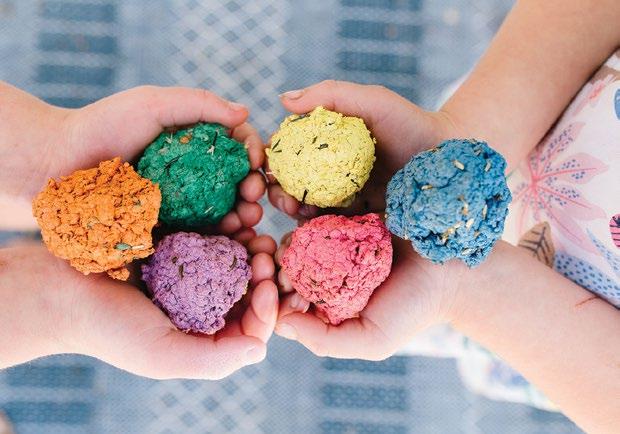
These seed bombs make wonderful gifts! If you're planning to give them away, let the kids wrap each bomb with a bow and a little tag. Have them sign their names on the tag, and you have a beautifully handcrafted gift.
If you’re using them in your own garden, just dig a small hole, plant the bomb, and cover it lightly with soil. Follow the instructions on the seed packet for the best results.

Gently mix your seeds into the paper pulp. Make sure the seeds are evenly distributed throughout the pulp.


Allow the seed bombs to dry for about two days. Those in moulds or cookie cutters may take a bit longer but can be removed once they are completely dry.


AGE GROUP: 4+years

Hundreds of thousands of children have already learnt to read with the help of Annie Apple, Bouncy Ben and Clever Cat – just three of the friendly characters who form part of the unique phonics system called Letterland. To celebrate Letterland’s 55-year anniversary, this latest edition of the best-selling Letterland ABC, includes vibrant illustrations and easy-to learn stories that bring a child-friendly logic to learning letter sounds and shapes.
The combination of memorable characters and sound educational principles makes Letterland the ideal way to introduce your child to the alphabet or to provide extra phonics practice at home.


AGE GROUP: 5+ years
The Letterland system teaches all 44 English speech sounds and their main spellings through engaging stories, rather than boring rules. These stories really come into their own for explaining sounds that are spelt with two letters (digraphs) instead of one. This book contains 40 of them! They will help your child to confidently tackle and enjoy many hundreds of words.
The combination of memorable characters and sound educational principles makes Letterland the ideal way to introduce your child to letter sounds or provide extra phonics practice at home.

GROUP:3+ years
AGE GROUP:4+ years
Young children will get a good foundation of handwriting skills with this clearly illustrated activity book. The friendly Letterland characters introduce fun pre-writing activities with a focus on pencil control and the correct strokes for the lower and uppercase alphabet
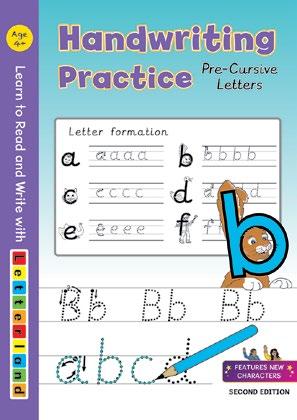
These 62 double-sided flashcards will give you a child-friendly way of introducing phonics concepts to your child with the help of the Letterland characters. Just start to say a character name and that’s the sound they make in words! Featuring lower and uppercase characters on one side and the plain letter on the reverse, these cards introduce the sounds and shapes of the alphabet to young learners aged 3+. Versatile and visually appealing, the pack includes instructions and phonics games ideas.
AGE GROUP: 3+ years


Completing the set of three valuable handwriting practice books, this activity book focuses on helping children to make the transition from print to joined-up writing. It includes letter templates showing exit strokes and will help children master writing at speed.
This activity book is for children progressing from printing letters to precursive letter writing. It also features pre-writing activities, letter formation practice and combining letters to form whole words and sentences.





























Explore and let your creativity shine with puzzles & pictures!

A group of birds from the same species is called a flock.
Colour in

Find 2 of the same birds
A hatchling refers to a baby bird that's just hatched from an egg. Other animals, such as turtles are also called hatchlings as they hatch from an egg.




Find 6 differences



Only birds have feathers. Feathers have various functions including: flight, regulating temperature, protection, and communication/ display.


Stimulate your brain with a classic game of Word Search! word
Infertility
Tongue
Sleep
Massage
Allergies
Antihistamines
Asthma

l p c e
v p i e a l h o e f t n i g n
e q j b a e a e a l l e r g i e s o e o
s b o l c m t u w u r h l g e h a d j i
c s k e l m i h t c n f i s r e x s c t
e b r e c u o k k f m d a e e l r i m a
n x p d l p n n a s r u o f v n e k t c

c n i s a n t i h i s t a m i n e s r i
e d l f t e k s i x p h l h l l j s a d
l i b i d o w i m m u n e d i o z h x e
o w a d l i n s d h u a p p e t i t e m
a s g d r o f v g k p g a s t h m a t o
y t i l i t r e f n i s d h a i p k r g
d l z x d h g s e f e a t h e r s z h s
Nosebleeds
Immune
Constipation
Infection
Liver
Wounds
Medication
Libido
Appetite
Teeth
Adolescence
Digital Feathers
Stand a chance to win!
We have 2X Babygrows (language of your choice) aged 3-24 months up for grabs. Choose from our diverse range of Babygrows that are available with quirky sayings in seven languages. Every unique story, pattern and language carries years of cultural roots. Each piece is designed to represent a family legacy, an ode to the past, and a promise for the future.

To enter scan the QR code with your phone and complete the entry form online at www.babysandbeyond.co.za/competitions/
Closing date: 30 November 2024. T&Cs apply.








Recipe by Shannon Smith
2 tablespoons unsalted butter, softened
5 garlic cloves, 1 minced
½ teaspoon minced rosemary plus 2 rosemary sprigs
½ teaspoon minced thyme plus 2 thyme sprigs
½ teaspoon finely grated lemon zest salt
freshly ground black pepper
1 whole chicken, at room temperature
1 large onion, cut into 8 wedges
1 lemon, cut crosswise into 8 rounds
1 cup water, divided ½ cup chicken stock or broth
Method
Preheat the oven to 200ºC and position a rack in the lower third of the oven.
In a bowl, mix the butter with the minced garlic, minced herbs, and the lemon zest; season with salt and pepper.
Pat the chicken dry. Rub half of the herb butter under the skin and the rest over the chicken; season with salt and pepper.

onion, lemon, garlic cloves, and herb sprigs, and add ½ a cup of water.
1 2 3 4 5 6 7 8 9
Set the chicken breast side up on a rack in a roasting pan. Scatter the
Roast for 30 minutes, until the breast is firm and just beginning to brown in spots. Using tongs, turn the chicken breast side down and roast for another 20 minutes until the skin is lightly browned.
Using tongs, turn the chicken breast side up. Add another ½ a cup of water. Roast for about 20 minutes longer, until an instant-read thermometer inserted in the inner thigh registers 79°C to 82°C.
Tilt the chicken to drain the cavity juices into the pan. Transfer the chicken to a cutting board. Remove the rack from the pan and spoon off the fat.
Place the pan over high heat. Add the stock and cook, scraping up any browned bits. Press the lemon to release the juices.
Carve the chicken and pass the chunky jus around the table.







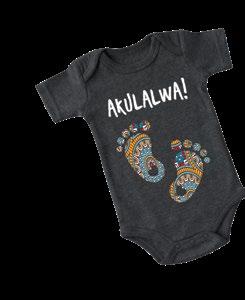





Monster High Skulltimate Secrets dolls offer a spooktacular unboxing experience with surprises that include fashions, accessories and themed pieces. Colour Reveal technology and step-bystep unveiling add magic and mystery, while the coffin container is perfect for storytelling and storage. The
Skulltimate Secrets
and


babysandbeyond
Aimed at families and individuals, Baby’s and Beyond™ features informative insights on prepregnancy, pregnancy, birth, babies, toddlers, special needs, tweens, teenagers, parents, health, education, financial planning and entertainment. Subscribe to stay in the know!
Scan the QR code or visit www.babysandbeyond.co.za and subscribe online.






2024 and applies to print subscribers with a South African address only. By providing your personal details, you are giving Baby's and Beyond permission to communicate and add you to our mailing list.





COMFREY COMPLEX CONTAINS COMFREY COMPLEX CONTAINS NATURAL COMFREY THAT NATURAL COMFREY THAT ASSSITS WITH THE TREATMENT ASSSITS WITH THE TREATMENT OF WOUNDS, ECZEMA, PSORISIS, OF WOUNDS, ECZEMA, PSORISIS, DRY SKIN AND OTHER FAMILY DRY SKIN AND OTHER FAMILY SKIN CONDITIONS SKIN CONDITIONS




Oats is an excellent way to start the day – it is nutrient rich and high in fibre and helps keep little tummies fuller for longer. These delicious bowls of goodness combine oats and Squish 100% Summer Berries Puree and are easy to make. Squish 100% Fruit and Veg Purees are packed full of natural goodness and are made using only the very best fruit – nothing else! They contain no colourants, preservatives or flavourants, so parents can rest easy, knowing they are making a smart choice for their little ones.
• 1 x 110ml Squish 100% Summer Berries Puree
• ½ cup oats
• 1 cup plain yoghurt
• 2 tsp chia seeds
• ¼ tsp vanilla essence
• pinch cinnamon
METHOD
Combine all ingredients and stir gently. Spoon into small pots or jars then leave in the fridge for at least 4 hours or overnight.
You can top with fresh fruit, or simply serve as is.

These aren’t any ordinary waffles – they’re packed full of fruit and veg goodness, thanks to Squish 100% Fruit and Veg Purees! Make a batch of this batter, divide it into serving size portions, then freeze. That way you’ll be able to whip up this breakfast treat whenever your toddler says, “Waffles, please!”.
• 1 x 110ml Squish 100% Apple, Beetroot + Guava Puree
• 1 cup buttermilk
• 2 cups all-purpose flour
• 2 tsp baking powder
• 1 pinch salt
METHOD
Combine ingredients in a mixing bowl and allow to stand for half an hour. Pour batter into waffle machine and cook until golden.
This recipe is also a great way to use up any of the opened Squish 100% Fruit and Veg Purees you have in your fridge. Each Squish pouch comes with a resealable lid, so you can just use what you need then pop the rest back in the fridge to use later, cutting back on food waste.


Establishing a healthy breakfast routine for your little one lays the foundation for a lifetime of good eating habits. A well balanced breakfast helps fuel their growing bodies, ensuring they have the energy to enjoy their busy day. These recipes aren’t just delicious, they’re packed with goodness too, ensuring your toddler’s day gets off to the best start.



Squish 100% fruit and vegetable purees are made with quality ingredients and plenty of love, resulting in an abundance of benefits for your bundle of joy.
Setting them up for healthy future habits.
*Squish 100% fruit and vegetable purees are allegen free.
*Squish yogi contains cow’s milk.


